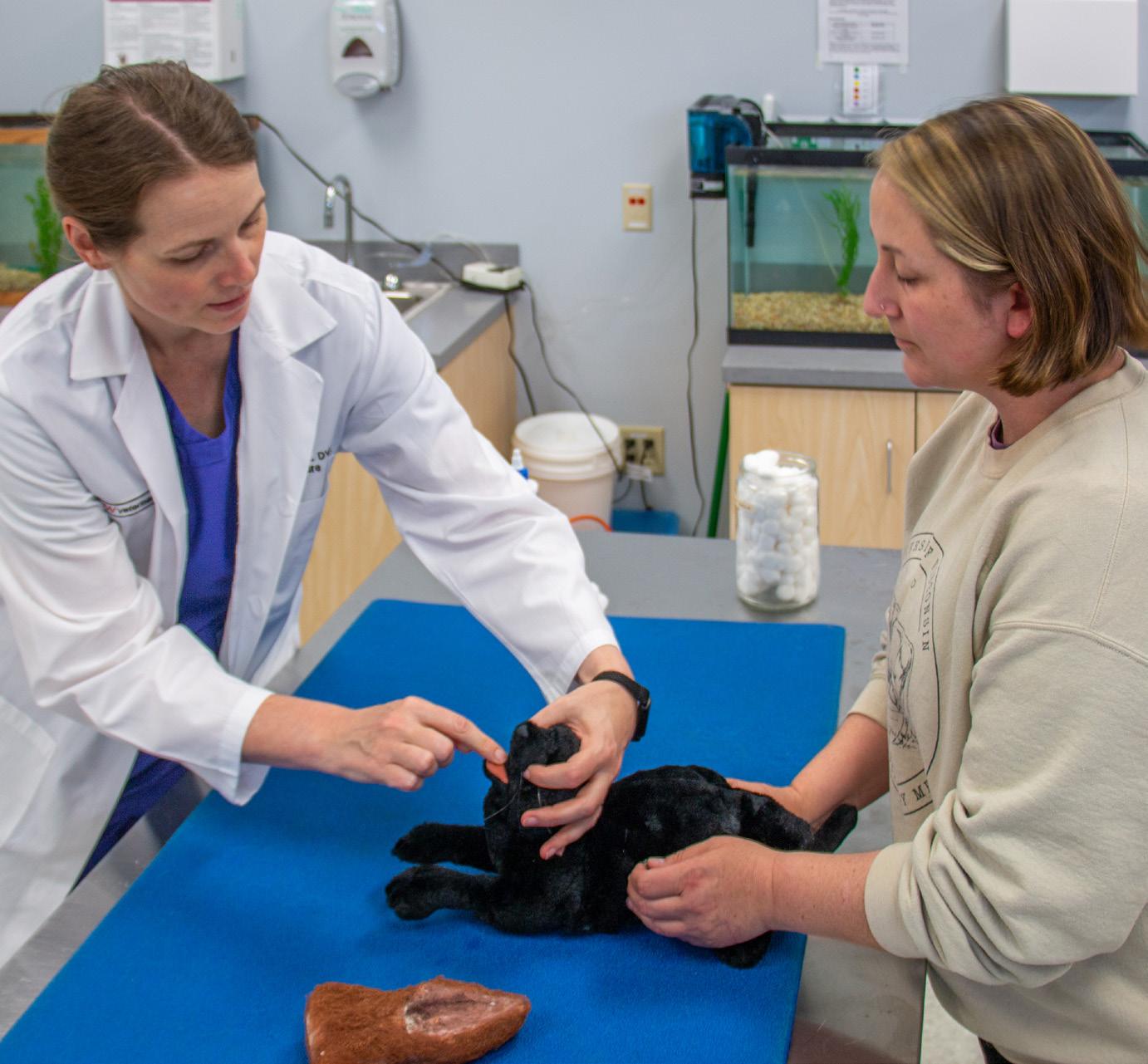On Call
A MAGAZINE FOR FRIENDS OF THE UNIVERSITY OF WISCONSIN SCHOOL OF VETERINARY MEDICINE

Advancing innovation
at the SVM
‘Without clinical research, medicine would be stagnant’
Page 10




Advancing innovation
at the SVM
‘Without clinical research, medicine would be stagnant’
Page 10


Althea Dotzour/University of Wisconsin–Madison
Welcome to the most amazing profession. The School of Veterinary Medicine’s faculty, staff, and alumni are truly impressed by your dedication, integrity, and tenacity as you worked toward your dream of earning a Doctor of Veterinary Medicine degree. Congratulations, Class of 2025 — we are so proud of you!
Sarah Albers
Morgan Anderson
Elinor Arndt
Kristin Baert
Christopher Baker
Kayla Baumann
Ashley Belgarde
Emily Belling
Elizabeth Bertacchini
Rebecca Binder
Madeline Bodell
Deanna Borchert
Hannah Brinkman
Courtney Buser
JoAnn Cava
Aaron Cooper
Amelia Corona
Katie Craig
Erika Cromwell
Lauren Cromwell
Hannah Dassow
Jazmine Depledge
Azizeh Egerer
Maxine Ervin
Sally Fahr
Jennifer Fischer
Hannah Flatness
Jennifer Frisinger
Amanda Gimenez
Alexander Glittenberg
Aaron Goebel
Taylor Gordon
Sophia Grant-Counard
Nicole Greely
Jacob Grefe
Brenna Grych
Brianne Gryspeerd
Courtney Guenther
Kimberly Gums
Karissa Huang
Jenna Hutchinson
Brandon Incrocci
Jiyoon Jung
Danielle Kassner
Jack Lapierre
Yolanda Lee
Yiyao Li
Zirui Li
Carnita Lincoln
Caroline Majinski
William Marquardt
Nicole Martens
Abigail Martinson
Nickolas Massaro
Emily Massie
Naomi Mathew
Katherine McCauley
Erin McMahon
Elizabeth Morrow
Erika Mueller
Holly Muth
Justin Nelson
Brianna Ohm
Ashley Oppermann
Leah Owens
Chandler Pentecost
Ramsey Peterson
Katelyn Quick
Jacob Rastas
Clarisse Rebancos
Marissa Rosen
Casey Roth
Yuzhou Sa
Jordan Sandoval
Ian Schirtzinger
Rita Serpa Stock da Cunha
Kate Silverthorne
Lauren Soroudi
Taylor Statz
Kaylee Steeno
Janice Tan
Joseph Terry
Matthew Vander Poel
Oona Vanhatalo
Madison Verlinde
Tammy Wang
Caitlin Warren
Taylor Weary
Brenna Wetherbee
Kailey Wichman
Lindsey Wichman
Willow Williams
Ruochen Wu
Stephanie Yopp
Yinan Zheng

The School of Veterinary Medicine has a 40-year history of innovation. In 2025, that rich tradition continues with the support of the Ryley Clinical Innovation Fund. Established by two UW alumni to honor their beloved pet, the fund is bolstering the SVM’s and UW Veterinary Care’s ability to develop new treatments and bring new knowledge to patients and their families.
Page 10
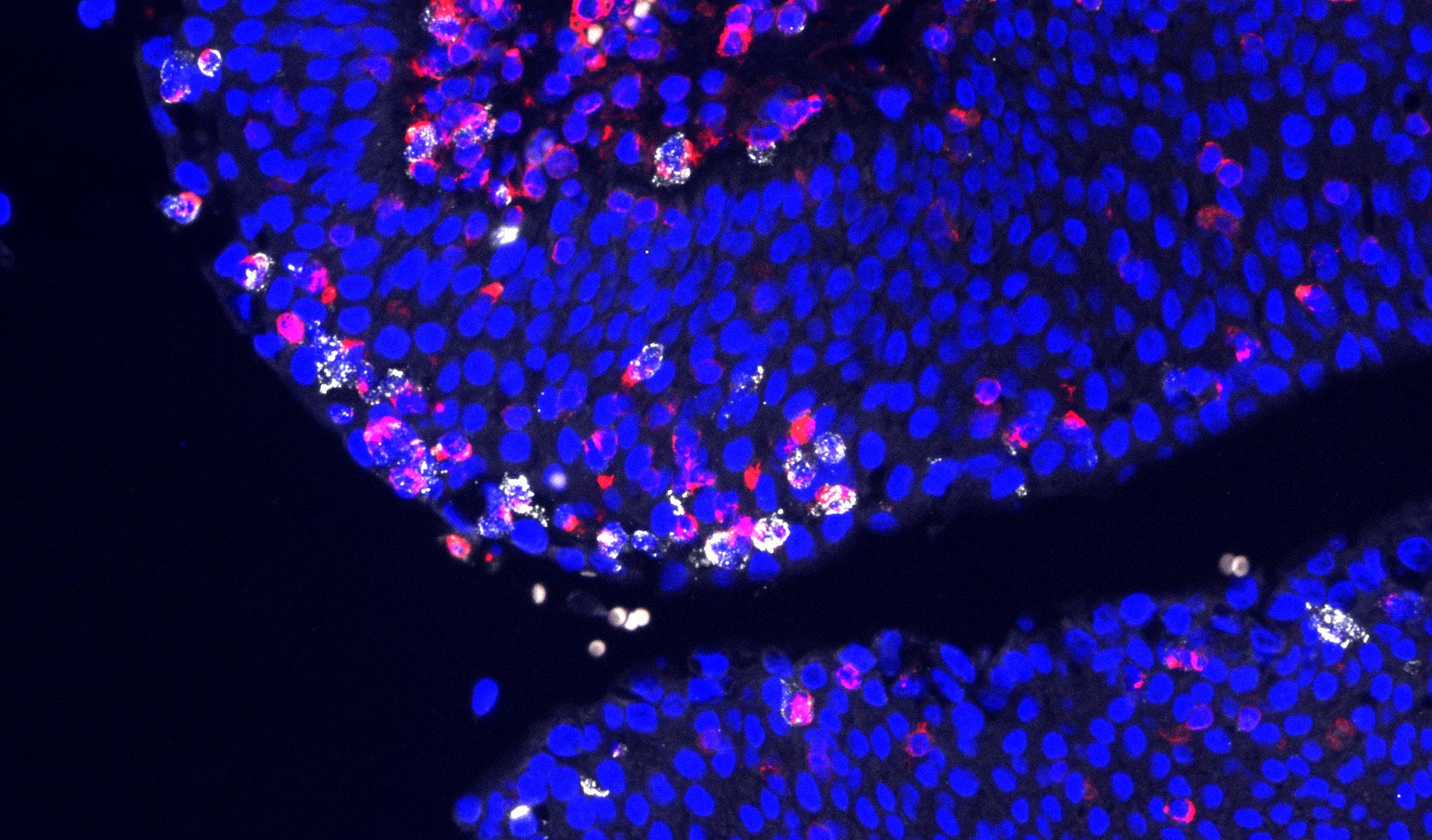
Each year, hundreds of millions of people grapple with uncomfortable and sometimes life-altering urinary tract infections (UTIs). New research from scientists at the SVM could improve how UTIs are diagnosed and help develop a way to encourage the body to naturally fight the infections.
Page 14
Roxy, a King Charles Cavalier Spaniel with a congenital heart disease, wasn’t suited for traditional surgery. Instead, she received a groundbreaking, minimally invasive procedure. This innovative treatment was made possible, in part, by the Ryley Clinical Innovation Fund, which supports the UW School of Veterinary Medicine’s efforts to pioneer new treatments and improve care for patients. (Photo: Seth Moffitt/UW School of Veterinary Medicine.)
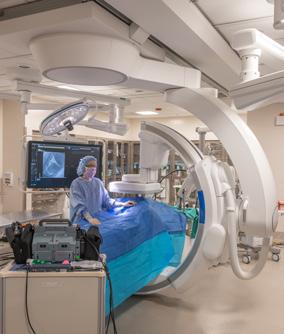
I hope you’re enjoying yet another beautiful Wisconsin summer. While many students are away from campus, teams across the SVM are continuing important work that will shape the future of our school. Strategic planning efforts are in their final days, with draft objectives and key results having been shared with our internal and external communities. Conversations across the school and with our stakeholders and supporters have helped form a plan that reflects our shared values and ambitions. As this message reaches you, our work is wrapping up. I encourage you to visit our strategic planning website (scan QR code below) for updates.
This coming fall, we will launch our new curriculum, known as “OnWard,” ushering in a new era here at the SVM. OnWard will offer students an education that is more clinically relevant, student-centered, and skills-focused to ensure they are prepared to be successful practicing veterinarians on day one. The new curriculum retains essential core content while transforming how that knowledge is delivered and applied across four years, or phases, of study. Additional information about our new curriculum is available on pages 16-17 of this magazine.
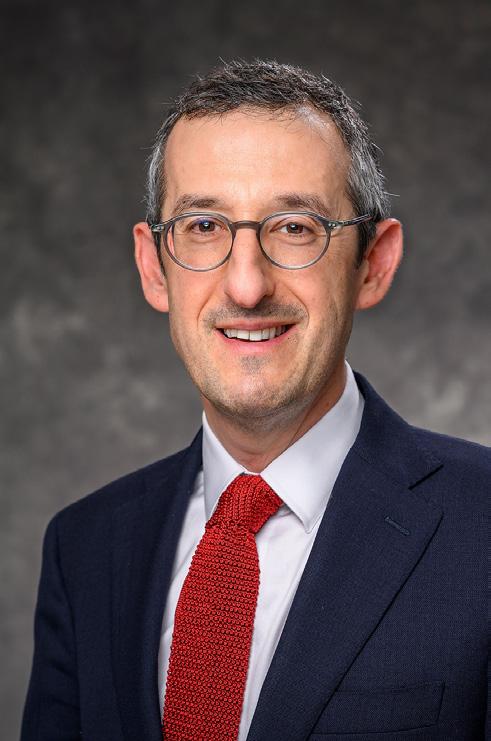
Administration
This fall, we will also be increasing our incoming DVM class size from 96 to 100 students, a step that reflects both our commitment to growing veterinary medical education and to meeting demand for skilled veterinarians.
We continue to make progress on faculty recruitment through the RISE initiative — a university-wide effort designed to address significant, complex challenges facing Wisconsin and the world. We are actively recruiting for two foundational science positions as a part of RISE-THRIVE, which seeks to improve the human health span. We’re also thrilled to be part of RISE-AI and we are working to fill two faculty positions in that area. Finally, we’re recruiting an additional clinician scientist. These new positions will strengthen our academic community and expand our impact across research, education, and clinical service.
As always, we are continuing to monitor developments in the federal funding landscape. While the outlook is ever-evolving, close collaboration with our colleagues across campus is helping us navigate uncertainty and advocate for continued investment in the SVM’s mission.
Until next time ... On, Wisconsin!
Visit our strategic planning website
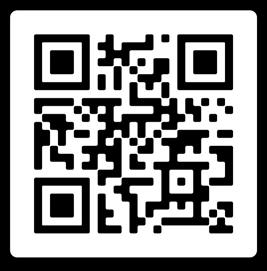

Jonathan

Levine, Dean @uwvetmeddean @uwvetmeddean.bsky.social
SUMMER 2025
Jonathan Levine , Dean
Richard Barajas, Manager of Outreach and Community Engagement
Fariba Kiani , Chief Financial Officer
Lynn Maki , Associate Dean for Student Academic Affairs
Nancy Parkinson , Assistant Dean for Human Resources
Peggy Schmidt, Associate Dean for Professional Programs
Chris Snyder , Associate Dean for Clinical Affairs and Director, UW Veterinary Care
M. Suresh , Associate Dean for Research and Graduate Training
Kristi V. Thorson , Associate Dean for Advancement and Administration and Chief of Staff
Lauren Trepanier , Assistant Dean for Clinical and Translational Research
Editorial
Editor : Maggie Baum
Lead Writer : Jack Kelly
Contributing Writers: Simran Khanuja, Katie Ginder-Vogel
Photography : Seth Moffitt
Design : Lexi Swain
Please send your feedback and comments to oncall@vetmed.wisc.edu, 608-263-6914, or On Call Editor, 2015 Linden Drive, Madison, WI 53706. www.vetmed.wisc.edu www.uwveterinarycare.wisc.edu facebook.com/uwvetmed facebook.com/uwveterinarycare x.com/uwvetmed x.com/uwvetmeddean youtube.com/uwvetmed instagram.com/uwvetmed linkedin.com/school/uwvetmed


bsky.app/profile/uwvetmed.bsky.social

bsky.app/profile/uwvetmeddean.bsky.social
On Call is also available online at: www.vetmed.wisc.edu/on-call
The printing and distribution of this magazine is funded by donations to the school. To make a gift, contact Heidi Kramer at 608-327-9136 or heidi. kramer@supportuw.org.
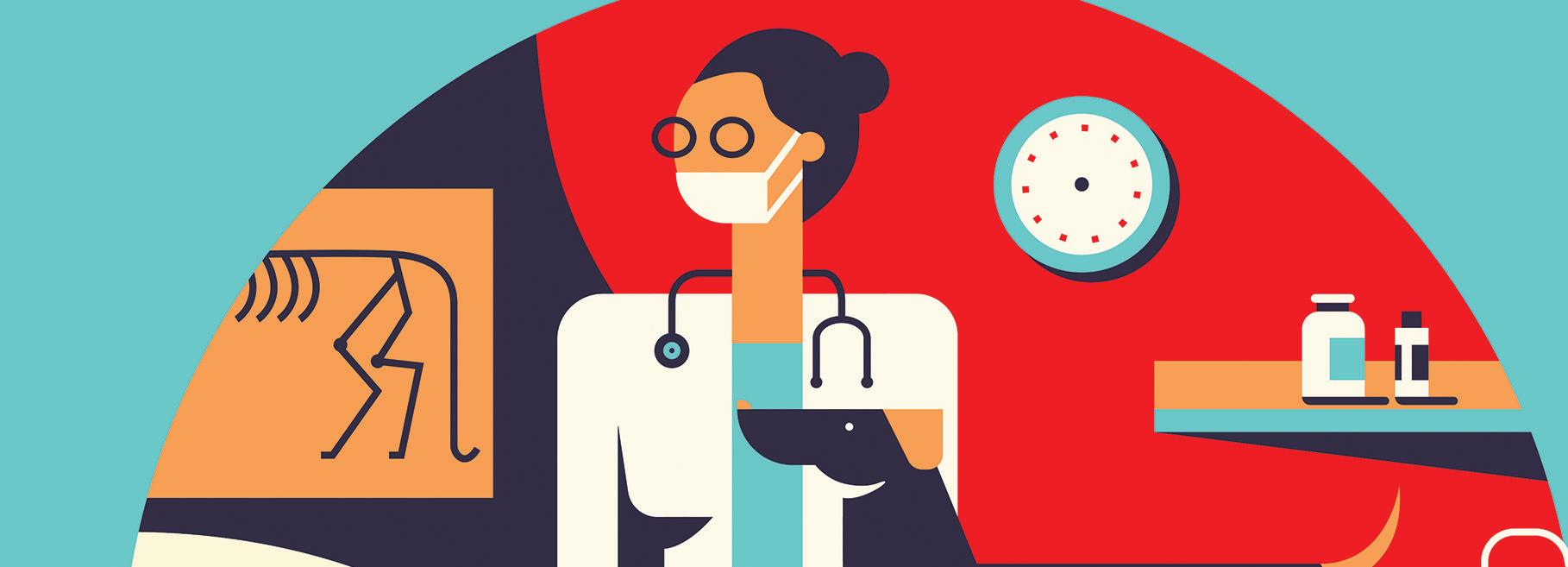
Dozen of cases of bird flu (H5N1 highly pathogenic avian influenza) have been confirmed in U.S. pets – especially cats – so far in 2025. While the risk to household pets is low, it’s important to stay informed about the disease and what to watch for. School of Veterinary Medicine faculty have been helping the public understand what to know and how to stay safe through local and national media interviews. Here are some highlights from recent interviews.
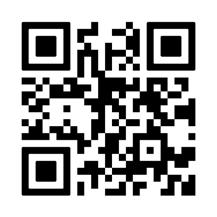
Scan for links to recent news coverage about the risk of bird flu in pets.
How can I keep my pets safe from bird flu? Cats are more likely than dogs to become sick from H5N1, according to Peter Halfmann (’01 PhD’08; Department of Pathobiological Sciences), who spoke with Popular Science and Wisconsin Public Radio (WPR) about rising concerns around pet infections. Most cases occur after cats ingest raw poultry or contaminated milk or encounter infected birds, he explained. Symptoms can include fatigue, difficulty breathing, and, in some cases, neurological issues. Halfmann recommends keeping cats indoors, avoiding raw meat and milk, and contacting a veterinarian if any unusual symptoms appear. Continued testing, flu shots, and improved hygiene can help reduce transmission risk to both animals and people, he explained in a separate story from WPR.
What does H5N1 mean for food safety? Pasteurized milk continues to be safe, Keith Poulsen (’00 DVM’04 PhD’12; Department of Medical Sciences) explained
in a recent interview with Newsweek, while raw milk and certain cheeses made from unpasteurized milk may carry risks. As director of the Wisconsin Veterinary Diagnostic Laboratory, Poulsen is helping lead surveillance and testing efforts to better understand how the virus is spreading and to support state and national response strategies. He also noted that the longer the virus circulates in domestic animals, the greater the chance for mutation and increased risk to public and animal health.
Should I be concerned about catching bird flu? The virus remains a low risk to the public, according to Thomas Friedrich (’97 PhD’03; Department of Pathobiological Sciences), who was featured in a WPR piece covering the first human death in the U.S. from H5N1. Friedrich, who studies how viruses cross from animals to humans, explained that the receptors on human cells differ from those in birds, making infection more difficult. Mutations found in the January 2025 Louisiana case may make the virus more capable of infecting human cells, but there was no sign the virus was transmitted to another person. More details are needed to understand what led to the person’s death, Friedrich said.
Our dedicated experts are always available to consult with you and/or your primary veterinarian if you have questions or concerns.
To see more inspiring animals, student experiences, and behind-the-scenes SVM content, follow @uwvetmed on your favorite platforms and stay in touch!
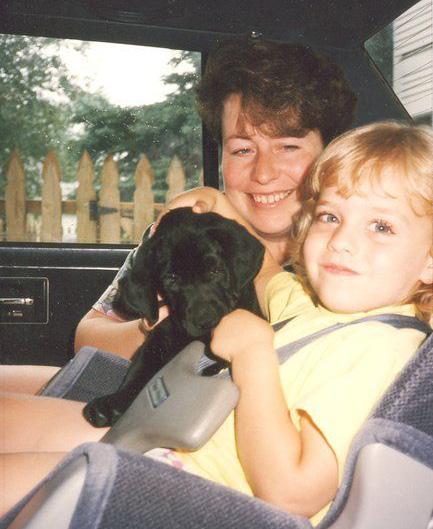
Research happening at UW-Madison changes lives. … When I was only four years old … the UW School of Veterinary Medicine performed a state-of-the-art double hip replacement surgery on my birthday present -- Leo, a black lab. Leo (named after UW professor Aldo Leopold) had severe hip dysplasia and could not have lived without the surgery. Instead, he was my best friend for 11 years and enjoyed a life of swimming, hunting, and hide and seek.
UW School of Veterinary Medicine’s open house yesterday was so much fun!! The new North building is amazing and very much needed.
Do you have a question you’d like to see answered in an upcoming issue? Send it to oncall@vetmed.wisc.edu For health issues needing immediate attention, please contact your veterinarian directly.
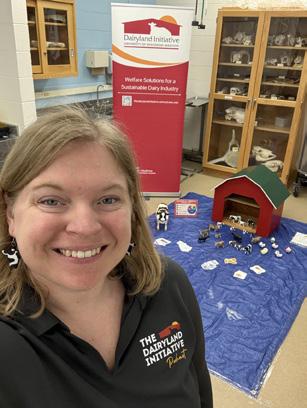

– Emily Beach via LinkedIn
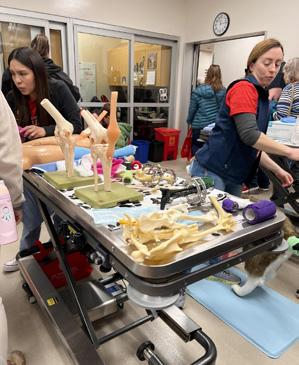
– Theresa Radant via Facebook
Had a fun day at the UW School of Veterinary Medicine’s Open House that was a part of the UW’s Science Expedition. Thanks to all who stopped by to learn about �� comfort and to play with the herd. Our first visitor was a cat!
– The Dairyland Initiative via LinkedIn

UW Veterinary Care (UWVC) is now offering PET-CT imaging, redefining how diseases are diagnosed and treated in animals.
PET-CT – which has been used for years in human medicine – represents a major leap in diagnostics at UWVC, especially in oncology. The non-invasive, whole-body scan can detect disease earlier than traditional imaging. The result? Informed decisions, personalized care, and more time with the pets we love.
The technology is “already proving invaluable for identifying cancer and monitoring its spread,” says Samantha Loeber (Department of Surgical Sciences), clinical assistant professor of diagnostic imaging. Faculty completed extensive training, with Loeber’s dogs, Shelby and Sawyer, helping ensure the process meets UWVC’s high standards.
PET-CT also supports sports medicine for canine and equine patients by identifying injuries and monitoring recovery, and helps distinguish between benign and malignant masses.
The technology bolsters a larger mission: advancing animal care worldwide and informing research that could help improve and save both animal and human lives.
“The insights we gain from studying diseases in animals often apply to human conditions,” Loeber says. “PET-CT offers a unique opportunity for translational research, where breakthroughs in veterinary care can directly benefit both animals and people.”
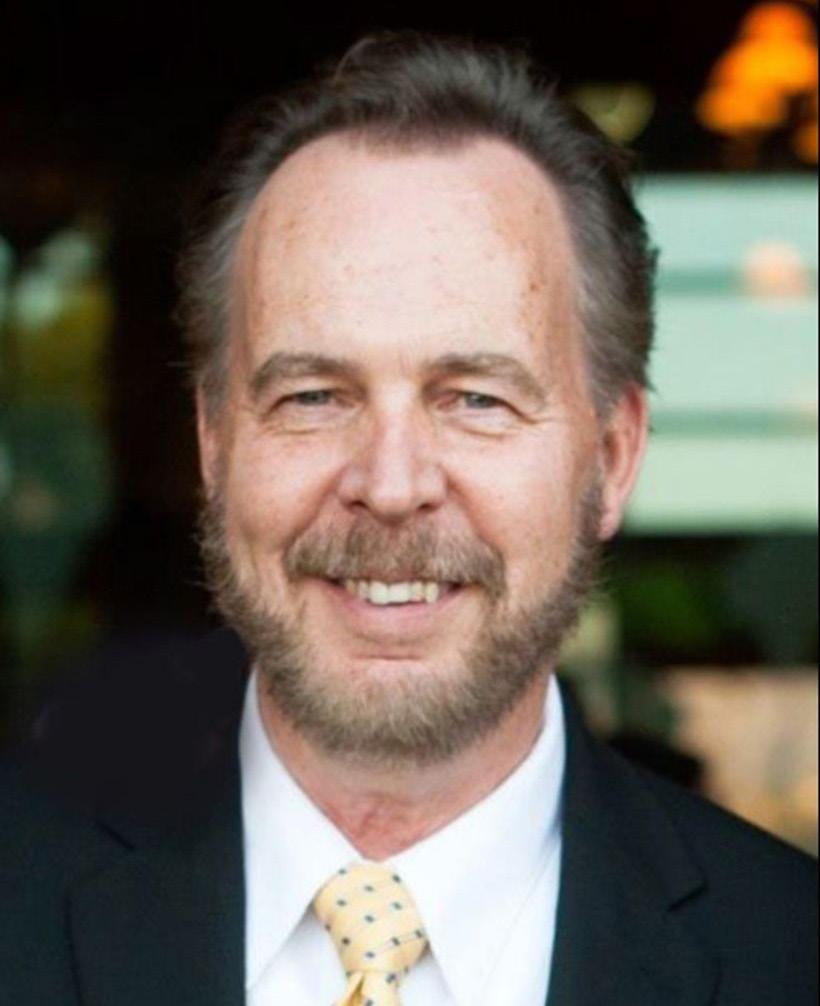
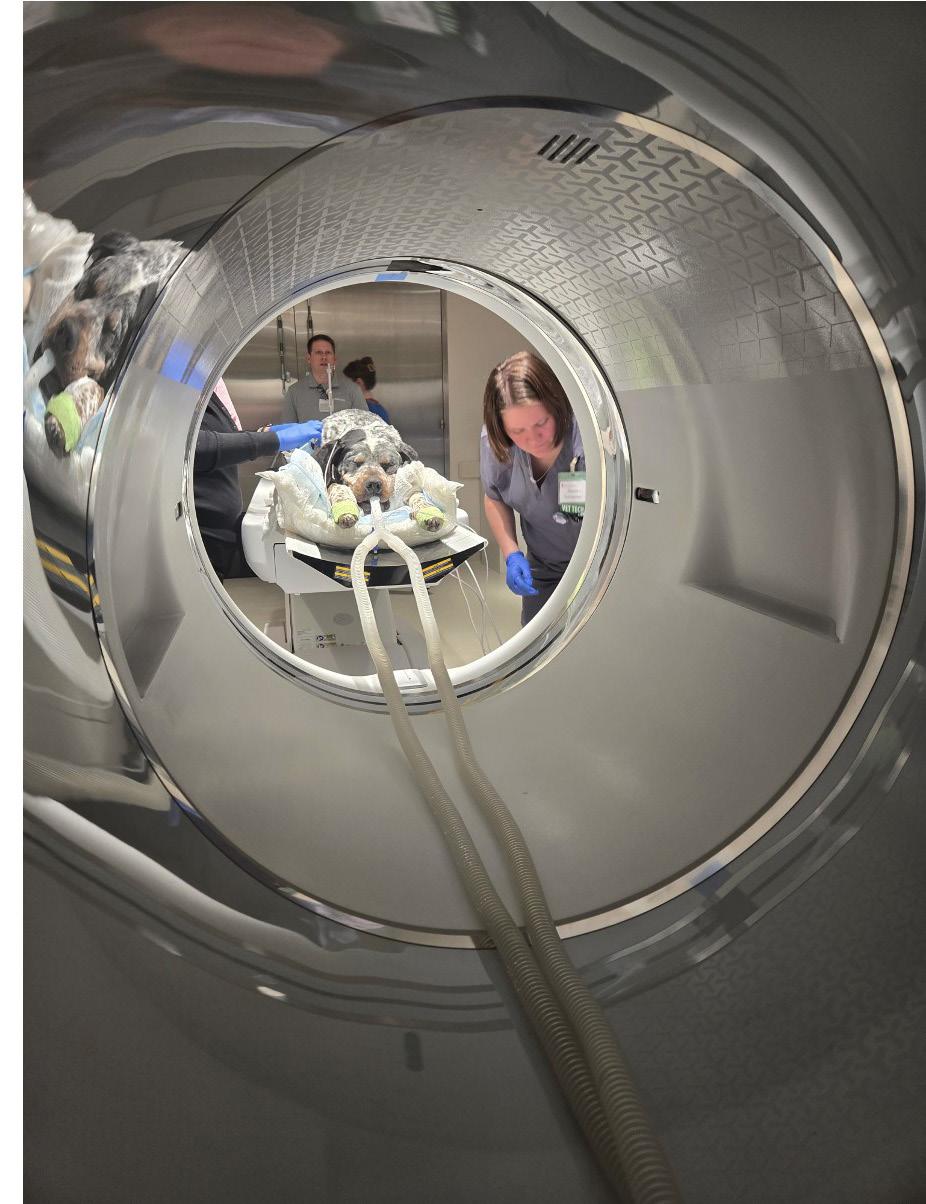
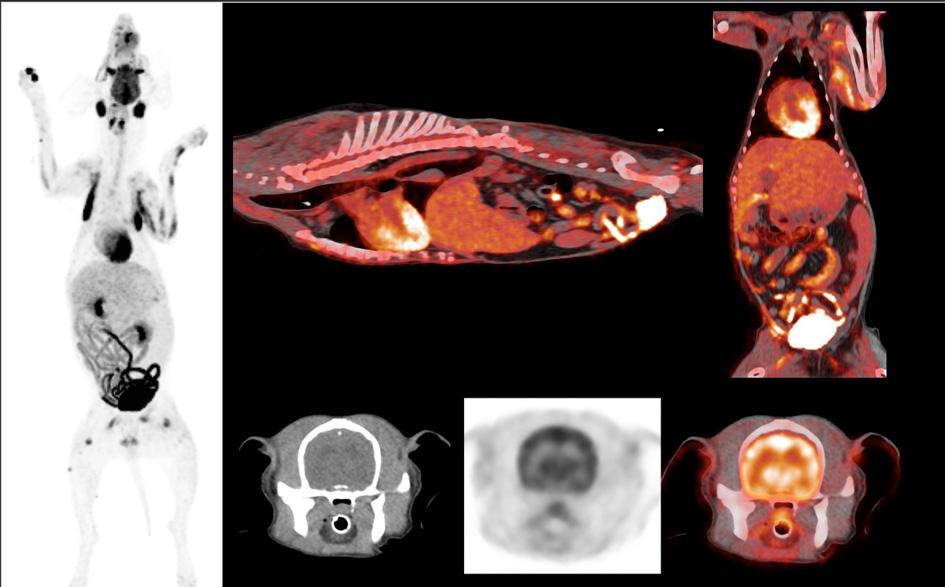
The SVM is saddened to share the passing of Ken Nordlund, who died on May 15, following a six-year battle with cancer. Nordlund was a vital part of the SVM community, serving as the head of the Food Animal Production Medicine group and playing a pivotal role in establishing the school’s international reputation for excellence in this field. He retired in 2014 as an Emeritus Professor. Nordlund will be remembered as an exceptional individual, loved by family, friends, and colleagues. His legacy and impact will live on, and he will be greatly missed by the SVM family.
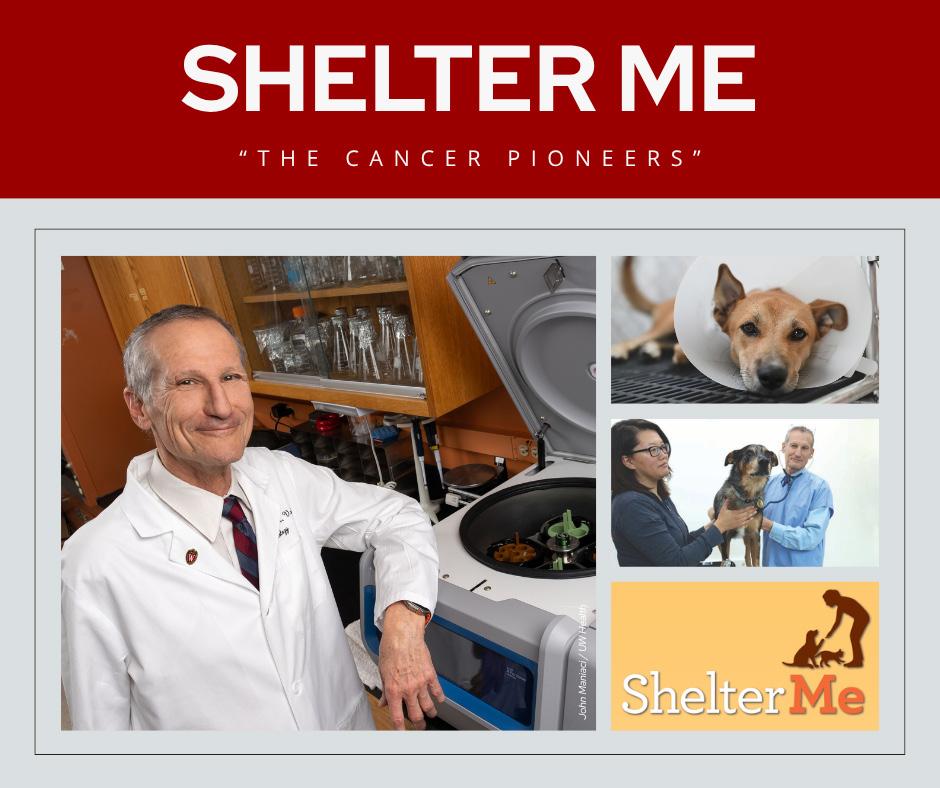
The School of Veterinary Medicine’s David Vail (Department of Medical Sciences) is featured in Shelter Me: The Cancer Pioneers, a new PBS documentary highlighting how canine cancer patients are helping drive leading-edge clinical research that advances treatments for both animals and people. Vail holds the Barbara A. Suran Chair in Comparative Oncology.
The series focuses on comparative oncology, where cancer in pets is studied through clinical trials that inform breakthroughs in human medicine. Vail’s work is a leading example of this approach, particularly in the development of immunotherapies for osteosarcoma. His efforts demonstrate the power of cross-species collaboration in the fight against cancer.
The documentary also features contributions from scientists at the National Cancer Institute, the National Institutes of Health, the University of Pennsylvania, the University of Illinois, and Colorado State University, underscoring the critical role veterinary medicine plays in shaping the future of cancer care.
The episode is now available free online, with national broadcasts continuing throughout the year.
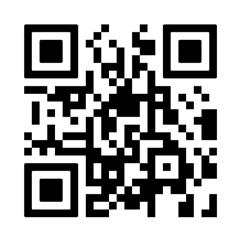
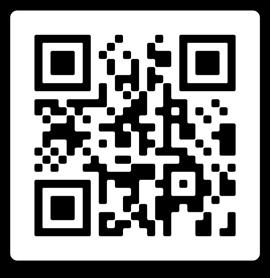
On April 26, nearly 300 students, faculty, staff, and supporters gathered at Union South for the School of Veterinary Medicine’s 2025 Celebration of Excellence. The annual event recognizes outstanding accomplishments across education, research, clinical care, and service and marks the close of another academic year.
“I had the pleasure of attending the SVM’s Celebration of Excellence event for the first time and all I can say is – wow!” says Dean Jonathan Levine. “It was inspiring to witness the energy in the room and to recognize the efforts of the exceptional people who work and learn here.”
Awards recognized excellence across a range of categories, including student and faculty achievement, specialty services, large and small animal care, and contributions to the humanities.
Congratulations to all award recipients and thank you to everyone who contributed to a successful event. To view the full list of honorees, visit go.wisc.edu/coe2025.
Scan to watch
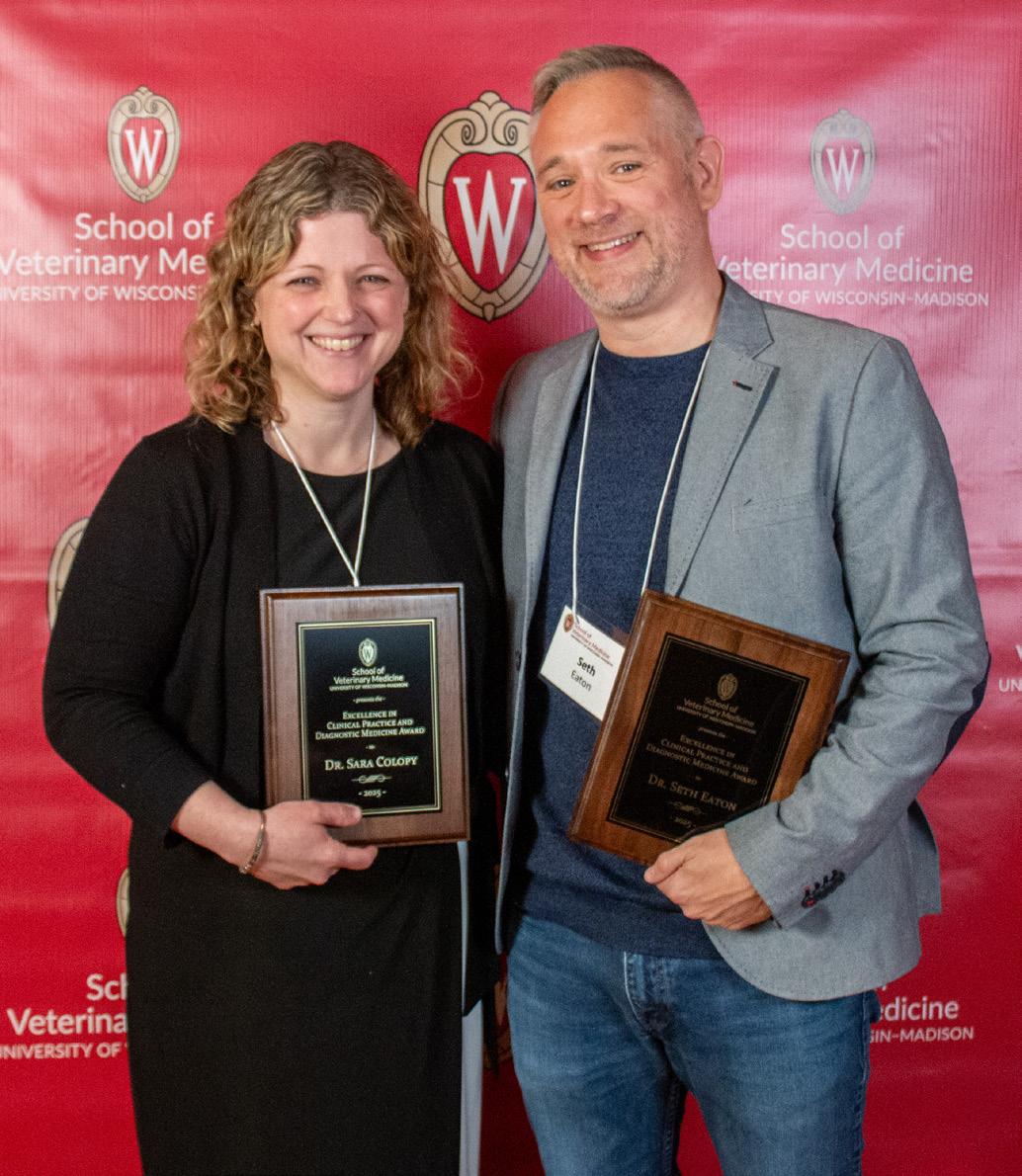
Seth Eaton (Department of Surgical Sciences) and Sara Colopy (DVM’04 PhD’12; Department of Surgical Sciences) were honored with an Excellence in Clinical Practice and Diagnostic Medicine Award.
Wisconsin officially joined the USDA’s National Milk Testing Strategy (NMTS) in May 2025, with the Wisconsin Veterinary Diagnostic Laboratory (WVDL) and Wisconsin Department of Agriculture, Trade, and Consumer Protection (DATCP) leading monthly bulk tank milk testing from more than 5,400 dairy farms statewide. Designed to accommodate differences across state animal agriculture systems, NMTS monitors and identifies H5N1 avian influenza (“bird flu”) in the U.S. milk supply and dairy herds.
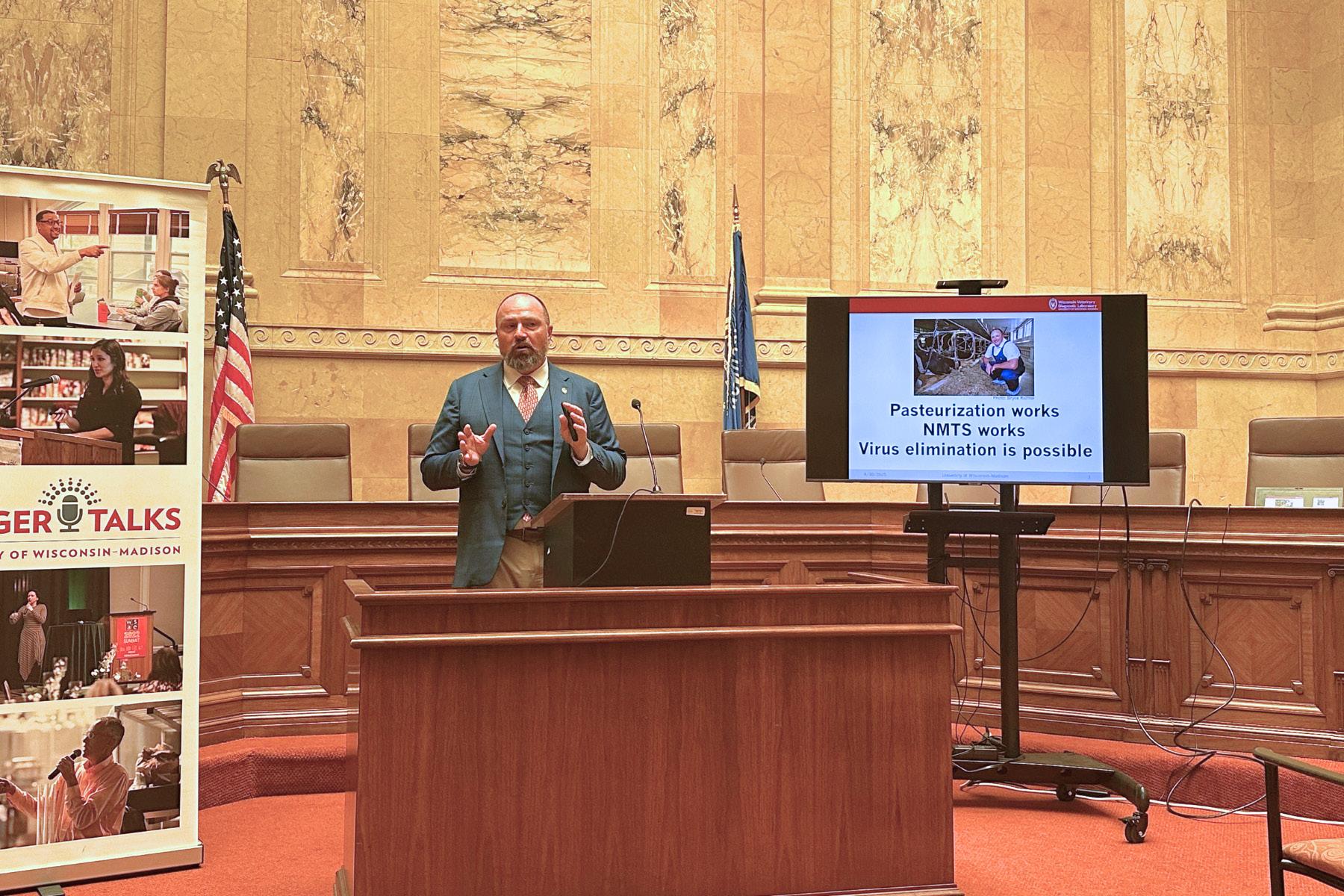
At UW–Madison, researchers are supporting the surveillance by testing retail milk and wastewater samples and conducting weekly monitoring at the university’s four dairy facilities. To date, no H5N1 has been found in Wisconsin dairy cattle.
“NMTS is working,” says WVDL Director Keith Poulsen (’00 DVM’04 PhD’12; Department of Medical Sciences). “The strategy has already identified a new D1.1 strain in the Southwest and continues to catch emerging infections in other states.”
Poulsen emphasizes that the pasteurization process most milk goes through is 100% effective against the virus and assures that pasteurized dairy products remain safe for consumption. With current technology and diagnostic capacity, he says, eliminating the virus is possible — but the role of veterinarians is essential.
“Herd veterinarians are key to helping farms prepare for and prevent the spread of infectious diseases like H5N1,” Poulsen says.
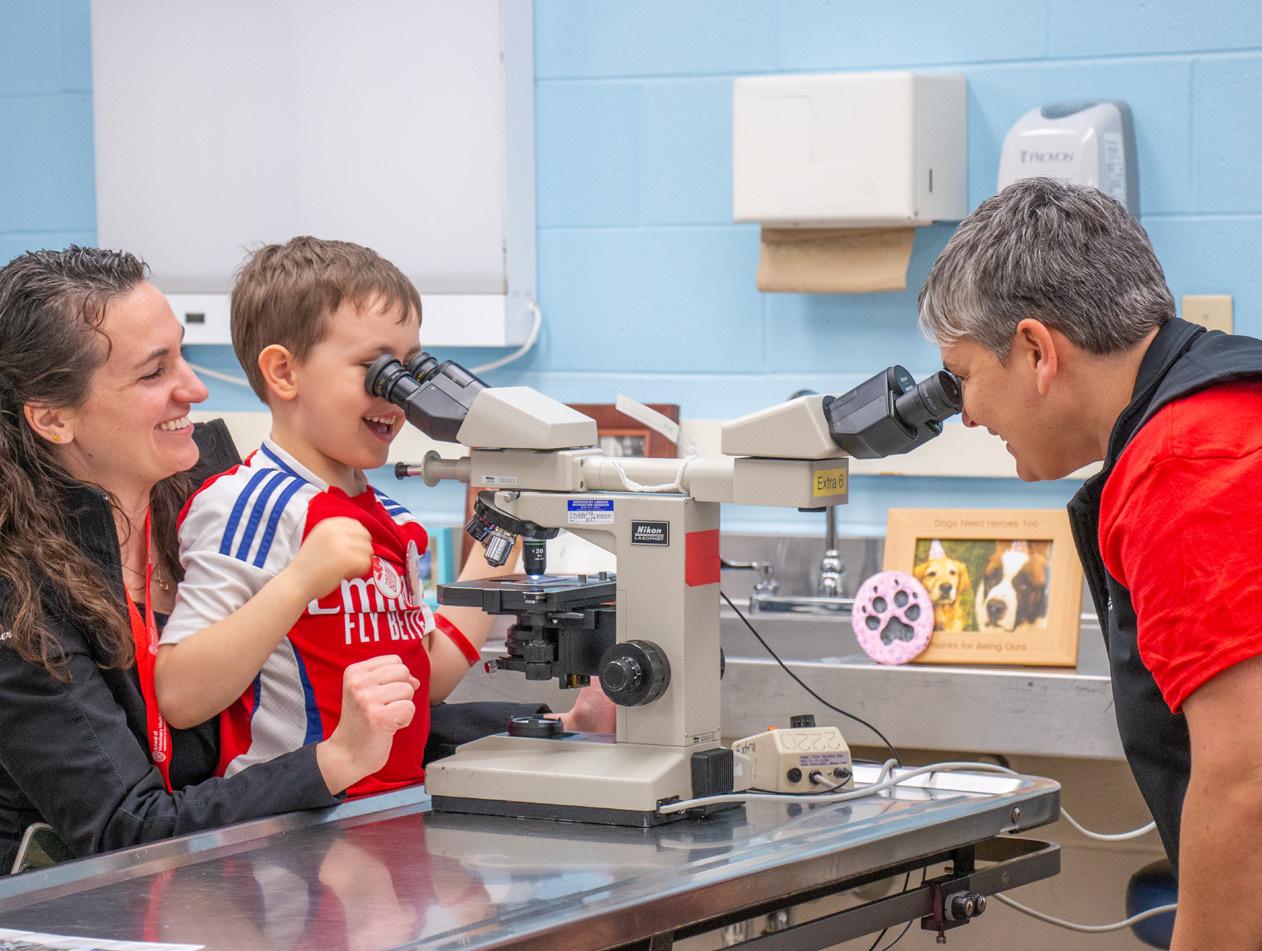
This spring, the School of Veterinary Medicine (SVM) and UW Veterinary Care welcomed the public to the 2025 UW Science Expeditions – a campus-wide open house designed to showcase the groundbreaking research, education, and outreach taking place across UW–Madison.
Visitors of all ages enjoyed a behind-the-scenes tour of the state-of-the-art SVM North building, which houses the new expanded teaching hospital and research and education spaces.
Through hands-on activities, guided tours, and interactive information tables, guests received an inside look at the innovative work happening across the SVM. From clinical services to educational programs to global research, attendees saw firsthand how the school makes a positive impact, from the urban and rural landscapes of Wisconsin to communities around the globe.
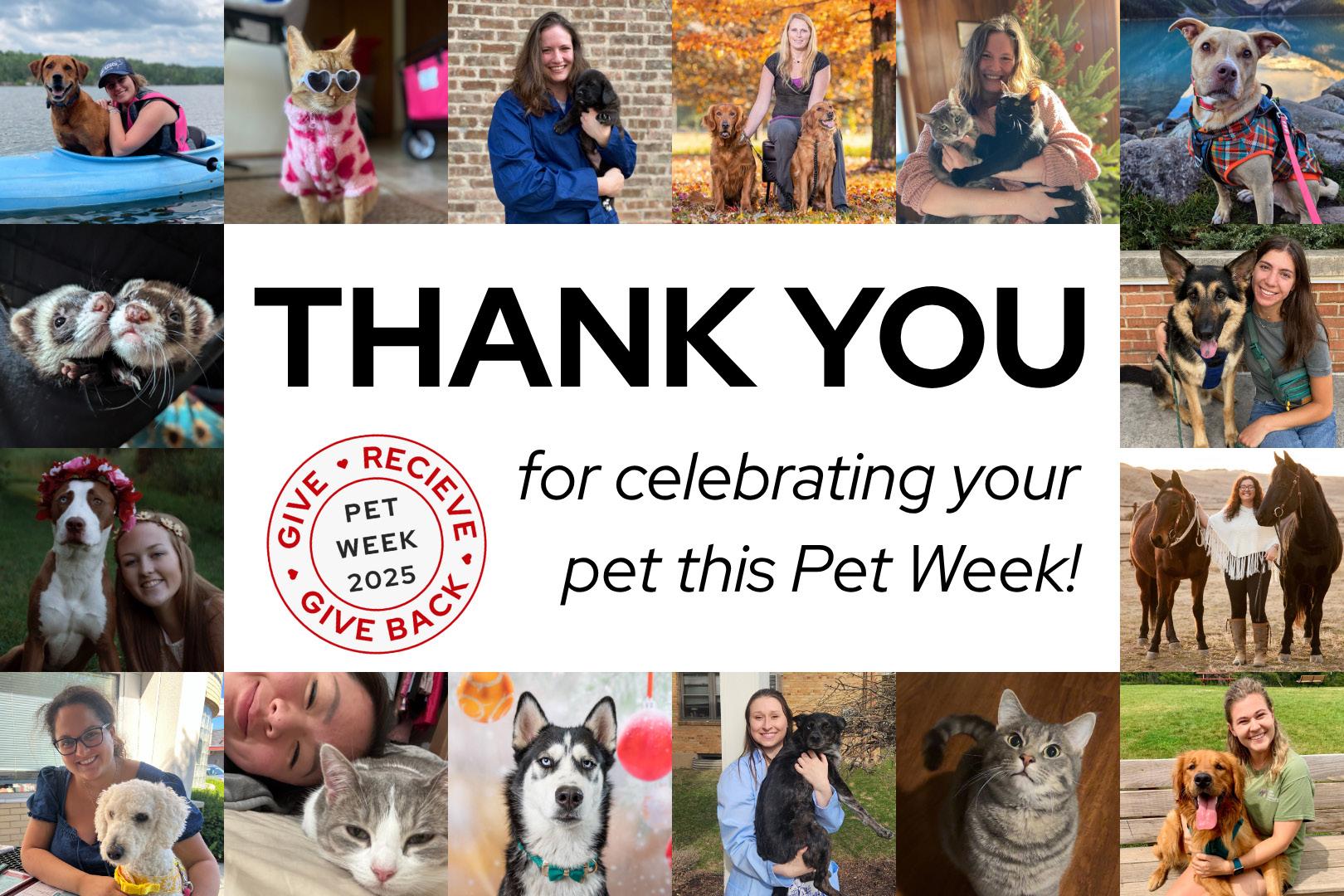
In May, the SVM celebrated Pet Week 2025 — time dedicated to honoring the joy pets bring to our lives. From wagging tails to soft purrs, pets give us their all every day, and Pet Week is our opportunity to give back.
Thanks to the generous support from our community, Pet Week was a tremendous success. Your gifts help the UW School of Veterinary Medicine provide life-saving veterinary care, advance cutting-edge clinical research, and train the next generation of veterinary professionals.
Whether you donated, shared a story, or simply helped spread the word, your involvement makes a difference for pets and their families. Every gift, large or small, fuels innovations in veterinary medicine and helps keep pets healthy and happy.
If you missed the chance to contribute during Pet Week, it’s not too late to get involved. Scan the QR code to learn how you can support our mission and help us continue delivering exceptional care and education for pets in Wisconsin and beyond.
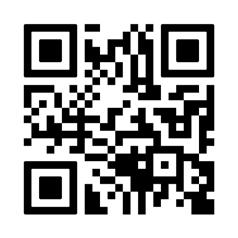
The School of Veterinary Medicine’s (SVM) WisCARES clinic was recently featured in a Spectrum News One Wisconsin “Everyday Hero” segment, which celebrates individuals and organizations making a difference in their communities.
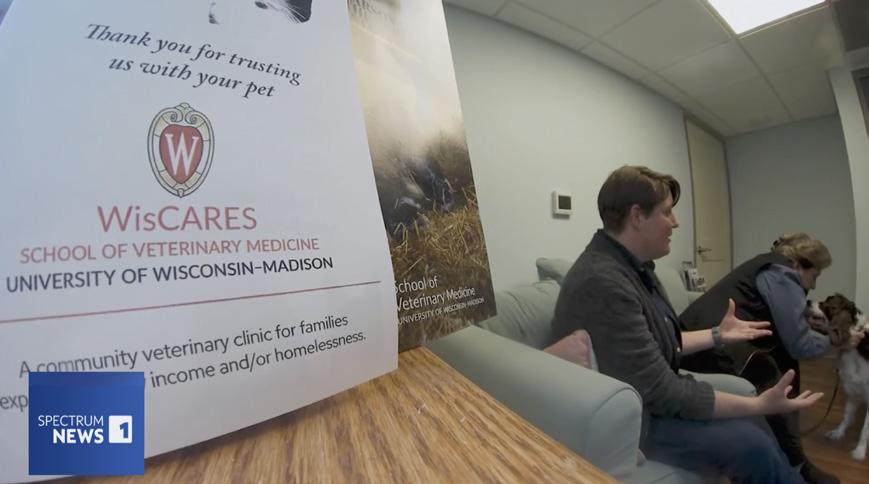
WisCARES (Wisconsin Companion Animal Resources, Education, and Social Services) blends veterinary care, housing support, and social services for pet owners experiencing homelessness or financial hardship. The story showcases the clinic’s mission to preserve the human-animal bond during life’s most difficult moments and its role as a learning environment for future veterinarians. SVM students have clinical rotations at WisCARES, helping them develop both their clinical skills and their understanding of accessible, equitable care.
The feature includes interviews with WisCARES Medical Director Kelly Schultz (’05 MS’11 DVM’15), fourth-year veterinary student Elizabeth Morrow (DVM’25), veterinary assistant Kiera Christiansen, and other WisCARES staff.
The segment comes on the heels of a major milestone for WisCARES: a $2.18 million grant from Maddie’s Fund®, a national foundation dedicated to improving the well-being of companion animals. This transformative funding will support clinic expansion, enhance services for pet owners in need, increase student training opportunities, and more.
Visit go.wisc.edu/wiscares-hero to watch the feature and learn more about the inspiring work of WisCARES.
by Katie Ginder-Vogel
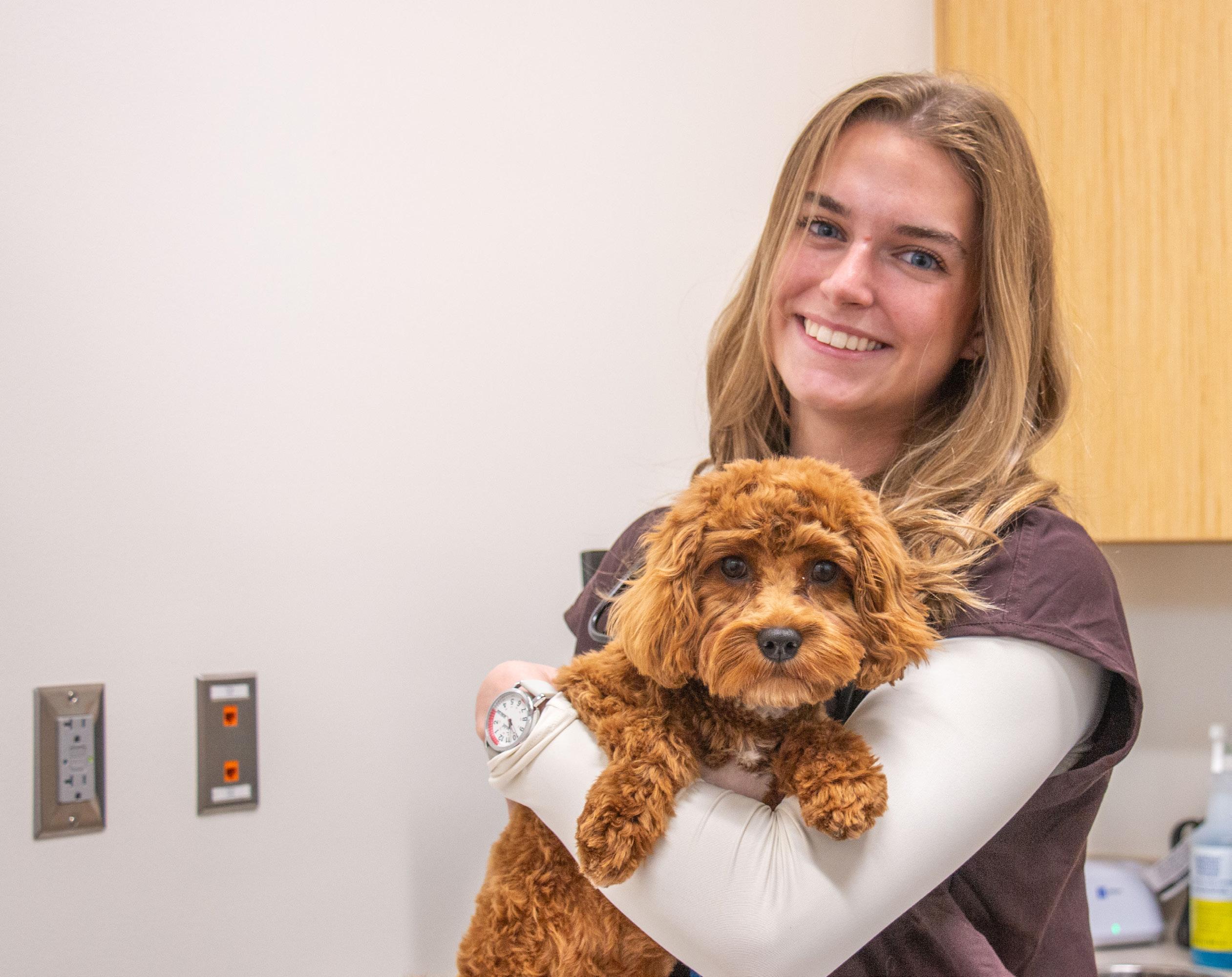
When Roxy arrived in April 2025 at UW Veterinary Care’s (UWVC) emergency department, she had a history of coughing, decreased energy level, and lack of appetite. The King Charles Cavalier Spaniel was quickly referred to the hospital’s cardiology department.
Listening to the five-month-old pup’s heart and lungs, a team led by Heidi Kellihan (Department of Medical Sciences; section head of UWVC’s cardiology service) became worried she might have a congenital heart disease. Roxy was exhibiting complications of patent ductus arteriosus (PDA) — a heart defect that occurs when a blood vessel doesn’t close at birth — and was experiencing fluid buildup in her lungs.
The most effective way to treat PDA is to close it, according to Kellihan, meaning Roxy faced surgery. But at just seven pounds, she wasn’t a good candidate for the hospital’s usual treatment.
Instead of what would have historically been an open chest surgery, the teddy bear-like puppy was treated using a new, minimally invasive procedure that placed a small plug in one of her heart vessels. To do so, Kellihan made a tiny nick in Roxy’s skin and completed the whole procedure through it. It was just the fifth time UWVC attempted the surgery. Roxy went home without any sutures and recovered well.
The surgery was made possible, in part, by the Ryley Clinical Innovation Fund, which covered about two-thirds of the cost of the new procedure. Established in January 2025 by UW alumni Gary Schwager (’75) and Gabrielle Banick (PhD ’89), the fund supports innovative clinical care at UWVC by funding learning opportunities for hospital clinicians, including mastering cutting-edge technologies and travel to study new surgeries. It also helps cover the costs of new procedures like Roxy’s and to purchase state-of-the-art equipment, among other things.
The School of Veterinary Medicine (SVM) has a history of innovative clinical care and translational research that advances new diagnostic and treatment tools to benefit both animals and humans. The Ryley Clinical Innovation Fund bolsters the SVM’s and UWVC’s ability to develop new treatments and bring new knowledge to patients and their families.
“We have a 40-year history of being one of the most innovative vet schools in the world,” says Dean Jonathan Levine. “The connection between our veterinary teaching hospital and research space creates a collaborative engine — which is fueled by efforts like the Ryley Fund — that leads to innovative, amazing patient care.”
Schwager and Banick, who met at a dog park and are longtime UWVC clients, have made annual donations to the SVM for years, including a contribution to the Animals Need Heroes Too campaign that funded the new SVM North building — home of the hospital’s state-of-the-art interventional cardiology suite.
“Donors made a huge investment into the interventional suite during our expansion project, and that allows us to do more of what we’re currently doing and to also look at cases in a new light, to see if there are new techniques that we can offer to new patient populations,” says Sonja Tjostheim (Department of Medical Sciences), also of UWVC’s cardiology service. “Things are changing rapidly in the veterinary cardiology space, and we want to bring new procedures to our clients and community.”
In 2017, Schwager’s daughter Whitney encouraged him to foster dogs with Madison-based rescue organization Fetch, where she has volunteered for years. Ryley, an Irish Setter, was Schwager’s first foster dog, and he and Banick happily became “foster fails” by adopting him at the end of his fostering period.
Ryley was found to have a heart murmur in 2020, and a year later he was diagnosed with myxomatous mitral valve disease — one of the most common types of acquired heart disease in older dogs. He became a cardiology patient at UWVC, where he was placed on a variety of medications, with several years of follow-up.
“He didn’t show obvious outward symptoms on most of the counts that concerned the clinical team, which was perplexing, and I saw how hard they worked to study and recommend the right medical care,” Schwager says. “Meds were added, adjusted, analyzed, and sometimes dropped, as care indicated.”
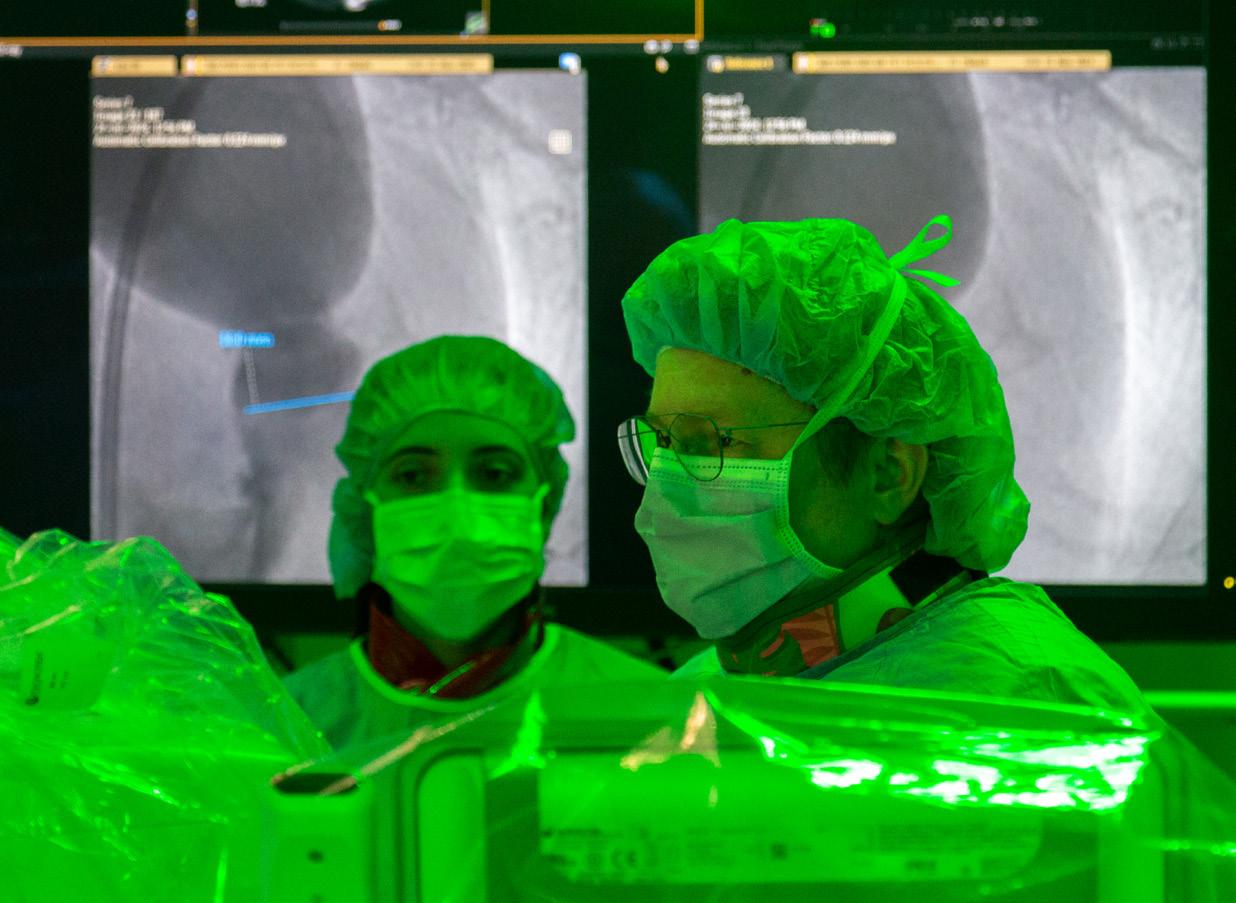
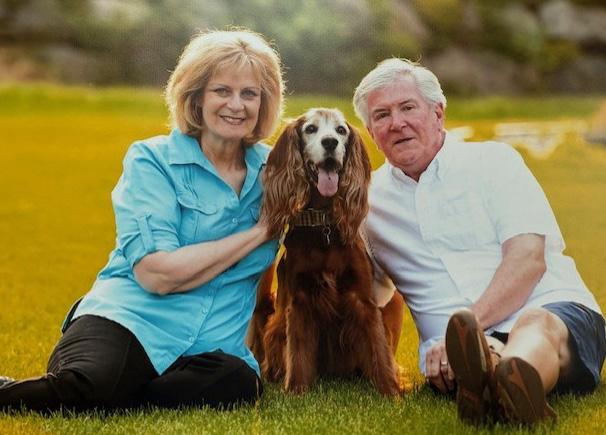
Ryley lived an otherwise normal life, enjoying walks, barking at squirrels, and playing at the dog park.
“Those six-plus years were so special, and as he started slowing down last year, we made sure to enjoy every second with him and make sure he had as much love as he was giving us,” Schwager says. “In the end, it was not at all apparent that any of his maladies took him early, it was likely just age. He had excellent medical care.”
The dedication of UWVC staff to Ryley’s care solidified Schwager and Banick’s commitment to supporting the SVM.
“Last year, after we lost Ryley, we said we’d like to do something in his memory,” Schwager says. “We got interested in supporting the technology that clinicians want to use to solve problems in new ways, tapping into new techniques and tools.”
(continued on the next page)
Today, the Ryley Clinical Innovation Fund is helping train clinicians, develop new procedures, and collaborate with other top veterinary schools. It also helps cover the cost of new equipment. The fund is propelling the SVM’s and UWVC’s national leadership in the field, which is exactly what Schwager and Banick had hoped to accomplish.
“I would love for UW to be the top tier of clinical innovation — knowing how to do these new procedures, learning them from others, and passing the knowledge on,” Banick says.
In addition to bolstering the UWVC’s cardiology team, the fund was recently used to purchase specialized equipment to help better treat patients with nasal disease and to offer a novel orthopedic surgery for dogs with unstable kneecaps (patellar luxations). It is also being utilized to support a new surgical procedure for chylothorax (fluid around the lungs) in dogs.
Donor support is critical to innovation, Tjostheim says.
“We don’t get to do these amazing things without this kind of buy-in from the community,” Tjostheim says. “It’s really life-changing for our program, and we work to translate it into the caliber of care we provide.”
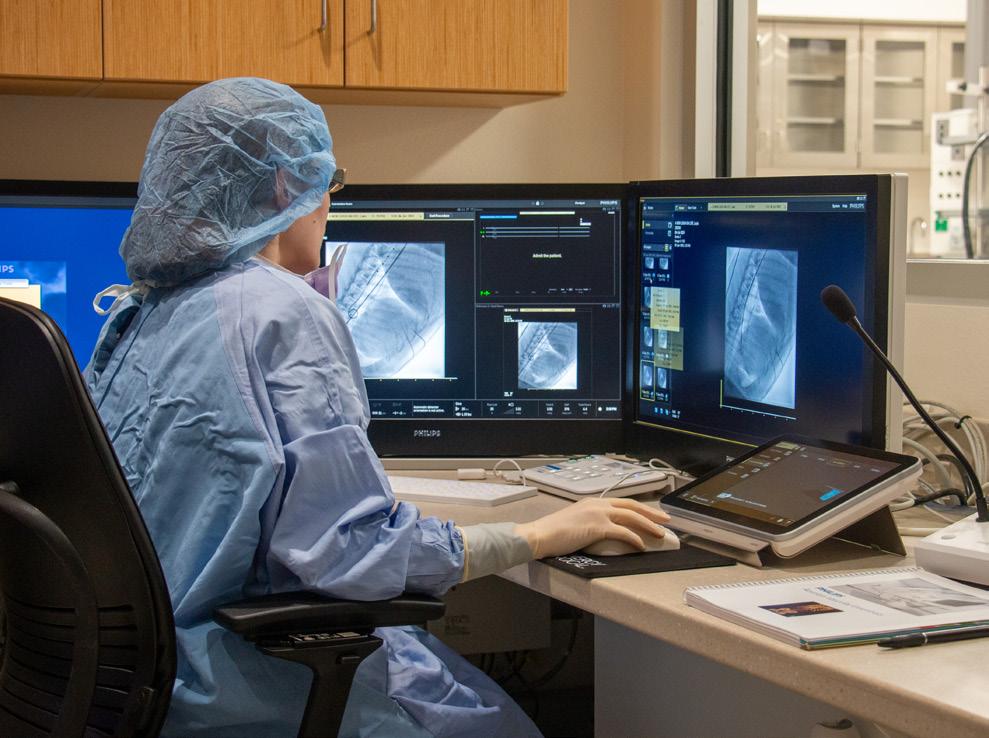
As Lauren Trepanier prepares to retire after a 28-year career, she’s handing off duties confident that the School of Veterinary Medicine (SVM) and UW Veterinary Care (UWVC) will continue to lead in the key area of clinical innovation.
The SVM’s secret sauce? Its commitment to collaboration, she says.
“The SVM has a unique collaborative environment among basic researchers, clinician scientists, and full-time clinicians,” Trepanier says. “The collegiality and willingness to share ideas is really invigorating.”
The importance of clinical research to the advancement of diagnostic and treatment tools can’t be overstated, according to Trepanier, the previous Melita Grunow Family Professor in Companion Animal Health and outgoing Assistant Dean for Clinical and Translational Research. She will retire at the end of August, with Starr Cameron (MS’21) assuming the role Sept. 1 (see sidebar).
“I couldn’t think of anyone I would trust more with this role,” Trepanier says. “Starr has the brilliance, energy, and people skills to maintain and accelerate our momentum.”
The Ryley Clinical Innovation Fund will play a key role in advancing patient care by allowing veterinary specialists to train with clinical experts around the country and access cuttingedge equipment, Trepanier says.
“The fund provides an outstanding opportunity to innovate in clinical care and propel clinical research here,” she says. “Real medical advances come from hard work, careful evaluation, and adequate funding.”
Trepanier is most proud of obtaining a $3 million U01 grant from the National Institutes of Health that was wholly devoted to training and supporting veterinarians in translational research (the submission received a perfect score), she says. She leaves with fond memories of watching vet students, interns, residents and early career faculty blossom into confident researchers. She is excited about what’s to come at the SVM at UWVC.
“We have so much new knowledge, generated from welldesigned clinical research,” Trepanier says. “We can do things for our patients now that are really inspiring.”

Starr Cameron (MS’21), Clinical Associate Professor in Small Animal Neurology and incoming Assistant Dean for Clinical and Translational Research, looks forward to stepping into a role that enables her colleagues, the School of Veterinary Medicine (SVM), and UW Veterinary Care (UWVC) to continue to lead in clinical innovation.
“The leadership here has always emphasized, supported, and believed in the importance of moving things ‘forward’ — it’s the Wisconsin way,” Cameron says. “The true collaboration and openness between researchers and clinicians at the SVM is incredibly unique and the main reason for its longstanding research success.”
Research is essential for understanding and improving the world, Cameron says.
“In veterinary medicine, clinical research allows us to understand diseases more thoroughly, as well as how to diagnose those diseases faster and more accurately for our patients,” Cameron says. “It also allows us to improve the current standard of care by improving treatment options. Without clinical research, medicine would be stagnant.”
As Lauren Trepanier prepares to retire from the role (see sidebar), Cameron plans to build on her support for clinical research and faculty.
“Lauren has done an amazing job supporting clinician-scientists and clinical research within the SVM,” says Cameron. “She has provided new ideas and infrastructure for programs for veterinary students, house officers, and faculty at UW and across the country. Over the past year, we have been working together to create shared clinical lab resources for clinical track faculty, which will improve efficiency and productivity.”
The Ryley Clinical Innovation Fund provides a unique opportunity to bring cutting-edge clinical practice to patients by supporting training for clinicians.
“The fund will be used to support training for our clinicians to learn new skills, procedures, and surgeries that are not currently being offered at UWVC, the state, or, in some cases, anywhere else in the country,” Cameron explains. “Other uses of the fund will be to offset some of the cost to clients for these newer procedures to be put into clinical practice.”
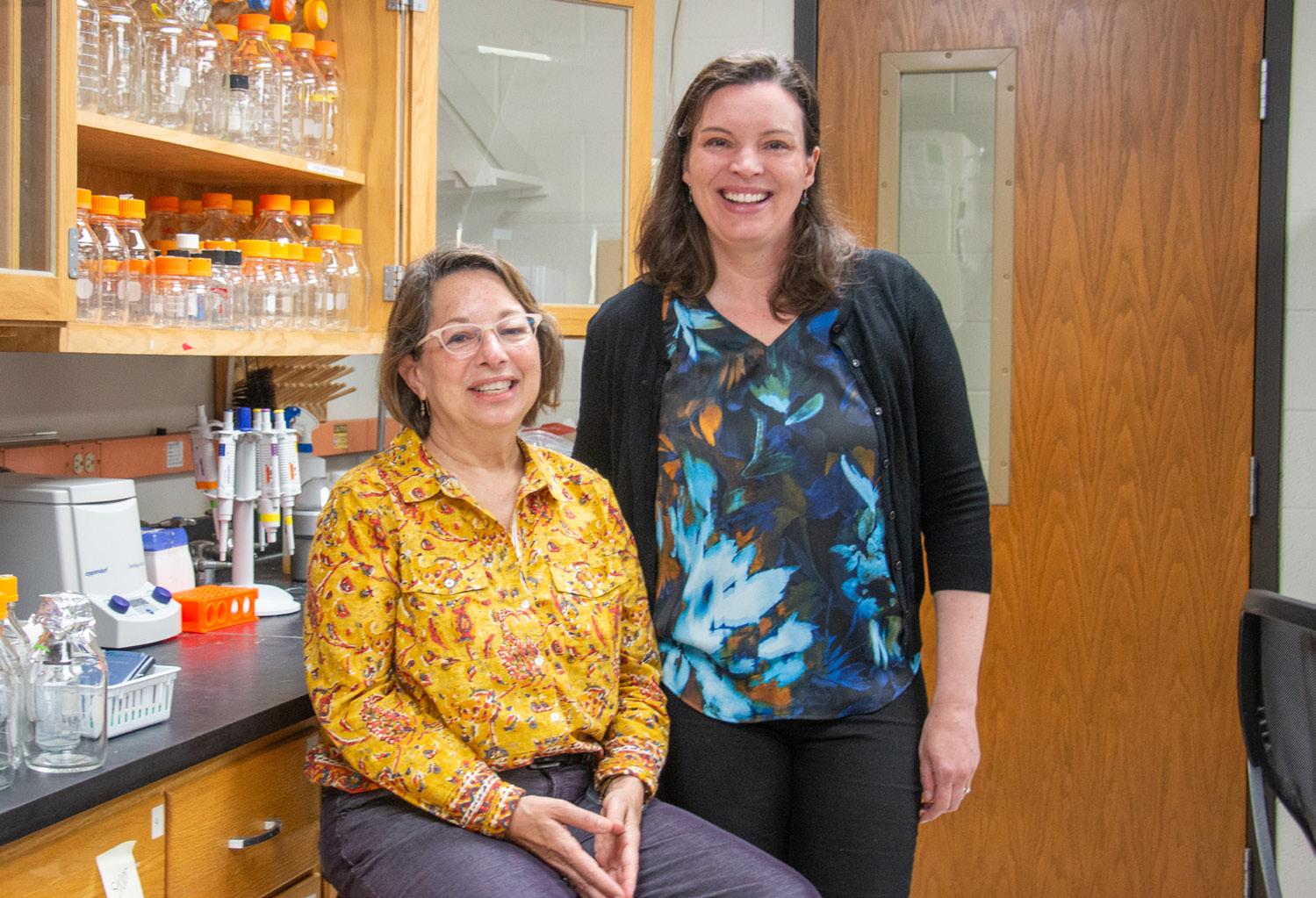
Private donor funding plays a critical role in veterinary medicine and patient care, Cameron says, with much of the clinical research at the SVM funded through individual donations and grants from foundations.
Cameron says she has impressive shoes to fill.
“Lauren is one of the best clinician-scientists, if not the best, the SVM has ever seen,” Cameron says. “She is truly a legend.”
Lauren Trepanier, left, is handing off her responsibilities as assistant dean for clinical and translational research to Starr Cameron, right, as she prepares to retire after a 28-year career.
by Jack Kelly
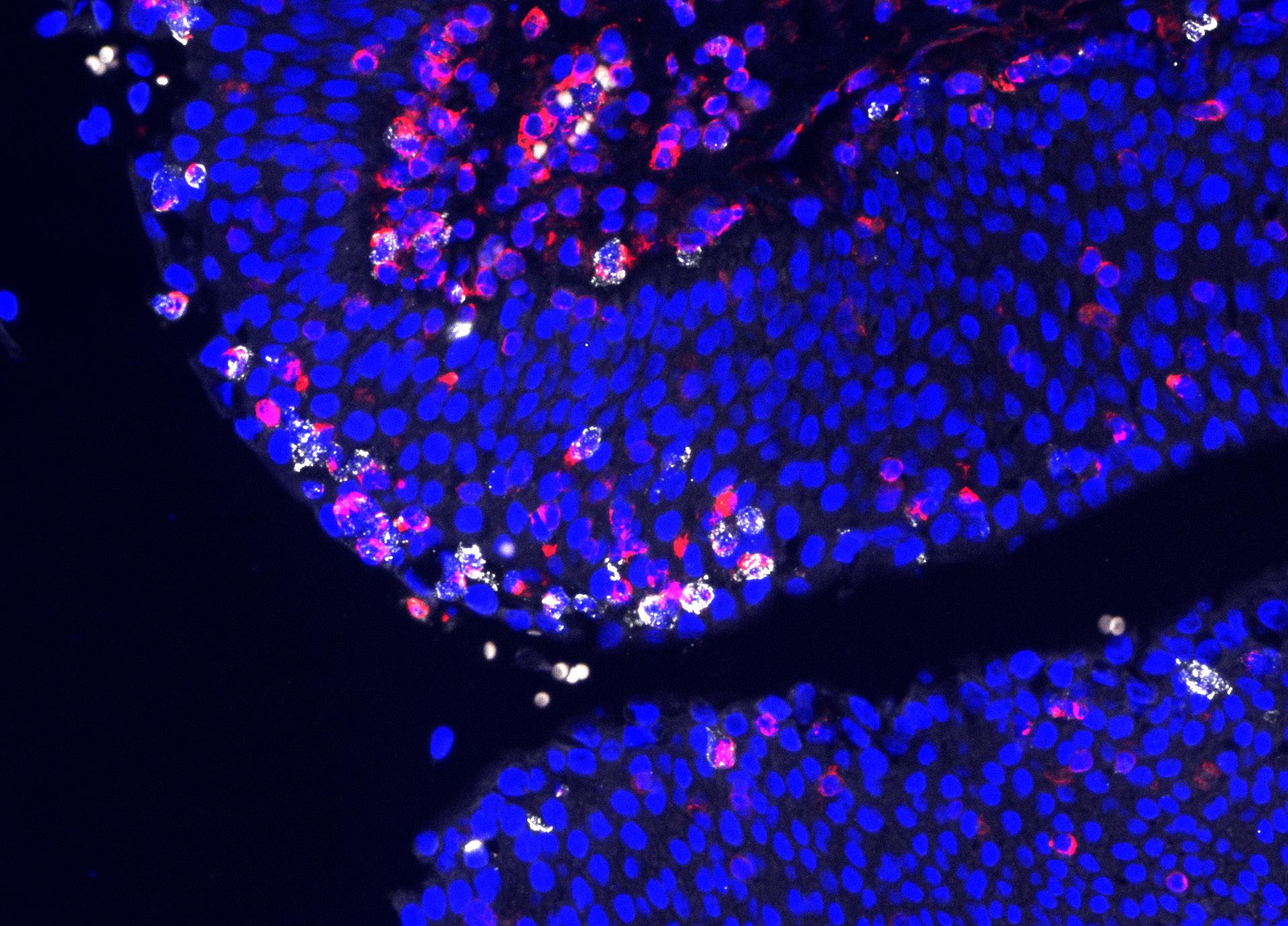
The number of urinary tract infections (UTIs) diagnosed worldwide each year has exploded in recent decades. In 1990, there were 250 million UTI cases across the world, according to a team of researchers at Shandong University in Jinan, China. By 2019, that figure was more than 400 million — a 60% increase — and researchers believe that estimate is an undercount.
But as more and more people, especially women, grapple with these uncomfortable and sometimes life-altering infections, what if there was a way to encourage the body to naturally fight against UTIs? And what if it was possible to improve how the infections are diagnosed? New research from scientists at the School of Veterinary Medicine (SVM), led by Chad Vezina (Chair, Department of Comparative Biosciences), could hold the answers to both of those questions.
Long considered to be just a passive conduit for urine, the researchers hypothesized that the urethra plays an active role in fighting against UTIs. The urethra contains many of the same cells as the lungs, the intestine and the skin — other organs that interact with the outside world. That got the researchers wondering if certain cells in the urethra would mount a response to potential infections in the same way that they do in other organs, Vezina says.
Vezina and his team tested the theory in mice. They found that bacteria (the most common cause of UTIs) entering the urethra
causes certain cells, known as neuroendocrines cells, to release serotonin. That chemical response, in turn, causes the urethra to contract and expel “invading” bacteria.
The discovery leaves Vezina optimistic that there could be ways to bolster the body’s natural response to UTIs. There are existing drugs — many of them antidepressants — that boost the action of serotonin more than naturally would occur.
Those drugs “might be able to help people fight UTIs by boosting the signal” and helping the urethra contract to expel bacteria before it can cause an infection, Vezina says. This presents a potential alternative to combat UTIs at a critical time, given that the bacteria that causes the infections is becoming increasingly resistant to antibiotics.
Vezina’s research, in part, stems from the SVM’s federal designation as a George M. O’Brien center for excellence studying benign urology. The SVM, alongside Columbia and Stanford universities, is a national leader in urological research.
Through a collaboration with Columbia University, the research Vezina’s team conducted was supported by federal funds. But a recent loss of that grant funding leaves additional research the team hoped to conduct about serotonin signals in the urethra with no path forward.
The research could also lead to an improved diagnostic method for patients experiencing UTIs, says Marcela Ambrogi (PhD’20), who worked on the research alongside Vezina.
“A lot of times women go to the doctor and they’re told, ‘No, I’m sorry, but you don’t have a UTI,’” Ambrogi says. “They feel pain, they go to the doctor, and the doctor says there are no signs of bacteria in their urine so they can’t get treated.”
In many cases, women will return to the doctor several days or weeks later, still experiencing systems, and the bacteria will be detected in urine samples because the infection has progressed, Ambrogi says. Research done while working toward her PhD showed Ambrogi that mice that were experiencing UTIs had increased serotonin levels in their urine. Accordingly, urine samples from UTI patients could be analyzed for serotonin levels, rather than the presence of bacteria, and allow for treatment to start sooner.
An innovative diagnostic method could also be used to improve animal health, the researchers say.
“We’re looking at whether we can use the breakdown product of serotonin as a signal to identify infections in dogs that come to UW Veterinary Care,” Vezina says, adding that’s especially helpful in the animal health care setting because dogs can’t tell you their symptoms. A more definitive diagnostic method could similarly improve care for pets by reducing the amount of time they endure UTIs before receiving treatment.
A close-up look inside the female urethra, the tube that carries urine out of the body. Special stains were used to highlight different parts of the tissue: blue shows cell nuclei (the control centers of cells), white shows serotonin (a signaling chemical), and red shows a serotonin receptor. Some special cells in the urethra can detect invading bacteria and release serotonin, which signals muscles to contract and help flush out the bacteria — the urethra’s own defense system.
Elliot Heye, a first-year PhD student in the Department of Comparative Biosciences, reviews a slide in the Vezina lab.
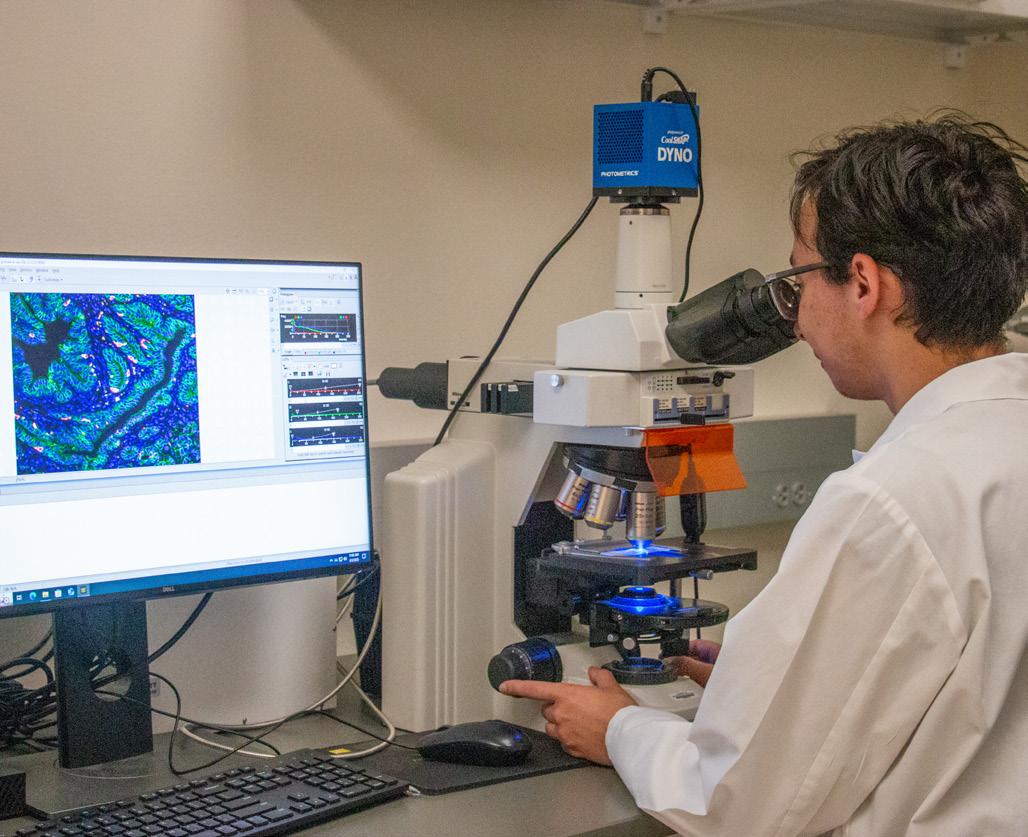
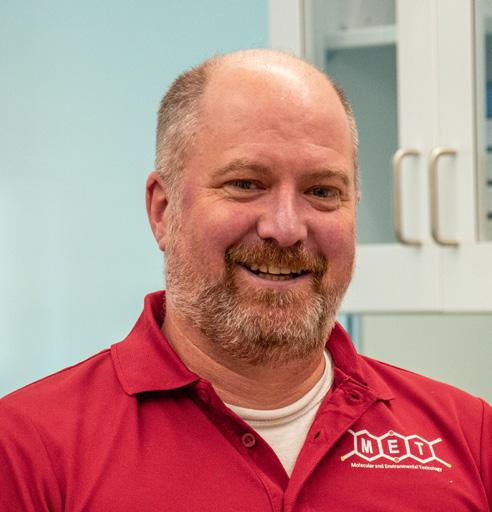
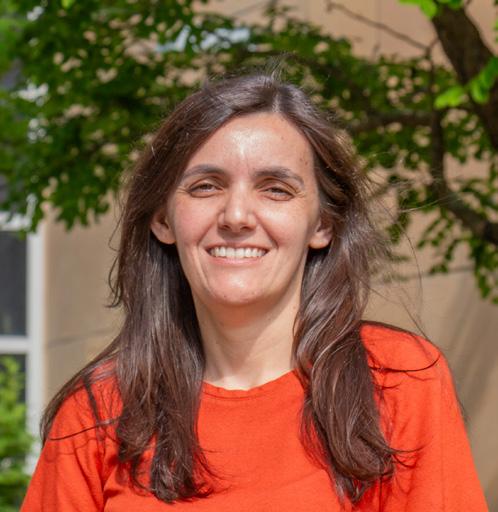
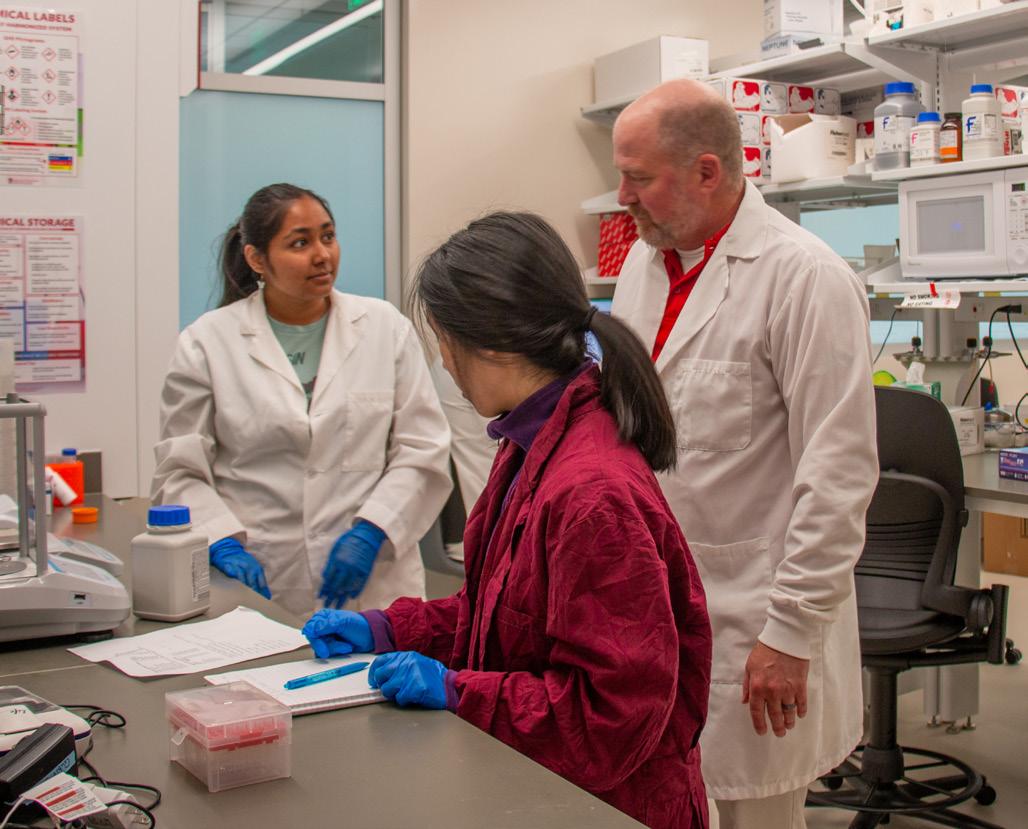
Vezina leads a team of researchers in work that could chart a new path to detecting and fighting UTIs.
Research from Marcela Ambrogi could lead to improved diagnostic methods for patients experiencing UTIs.
Vezina works with students in his research lab in the School of Veterinary Medicine’s state-of-the-art North building.

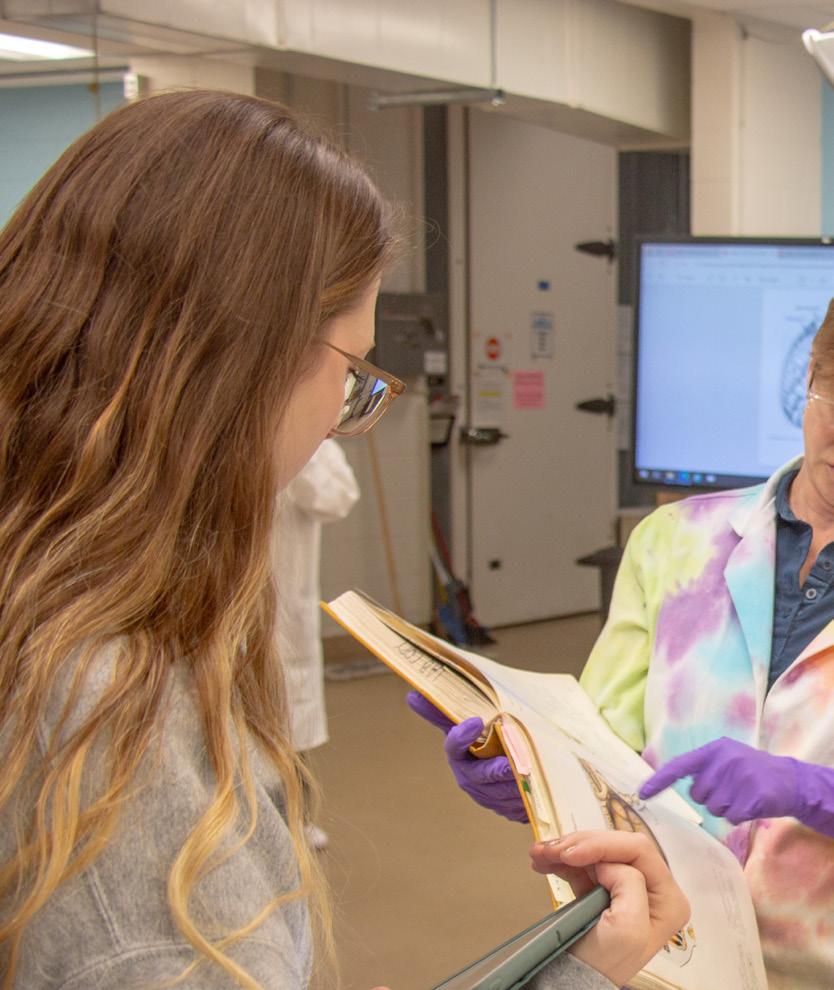
by Simran Khanuja
A revised Doctor of Veterinary Medicine (DVM) curriculum will usher in a new era at the School of Veterinary Medicine (SVM) this fall, offering students an education that is more clinically relevant, student-centered, and skills-focused to ensure they are prepared to be successful practicing veterinarians on day one.
The update reflects a faculty-led effort informed by data and research, as well as input from veterinary professionals, teaching specialists, and SVM educators. The new curriculum retains essential core content while transforming how that knowledge is delivered and applied across four academic years, or phases, of study.
While much of the existing content will remain, significant changes will reshape how it is taught, practiced, and assessed — shifting to a more systems-based structure that integrates basic science with clinical concepts. Students will also encounter expanded opportunities for self-directed learning and real-world problem-solving.
“Led by their passion for student success, our department chairs, faculty, and instructional staff are working diligently to continue to provide SVM’s legacy curriculum for students, while at the same time, dedicating time and effort to implement OnWard,” says Associate Dean for Professional Programs Peggy Schmidt.
The SVM sought suggestions to give the new curriculum a dedicated name, providing a lasting identity and a consistent frame of reference while marking the evolution of the program. Nearly 200 students, faculty, and staff voted, and “OnWard” was chosen. Submitted by student Deborah Liu (DVMx’26), the name highlights the advancement of the program and honors UW’s “On, Wisconsin” motto.
Faculty and instructional staff organized, reviewed, and created content. These activities varied from organizing already created content into new courses to updating content from lecture-based courses into pre-work formats. Those include recorded topic videos and curated readings to create new activities where students apply what they learned in a clinically contextualized way. Instructional specialists created new online courses that will help students navigate content and manage expectations in the new curriculum.
“We had tiered deadlines to give faculty flexibility to create materials when it best fit in their busy schedules,” says SVM Dean Jonathan Levine. “For students, this gives them a road map for their learning across the semester and balancing proximity of learning to application with the flexibility to fit in the pre-work when it works best for them.”
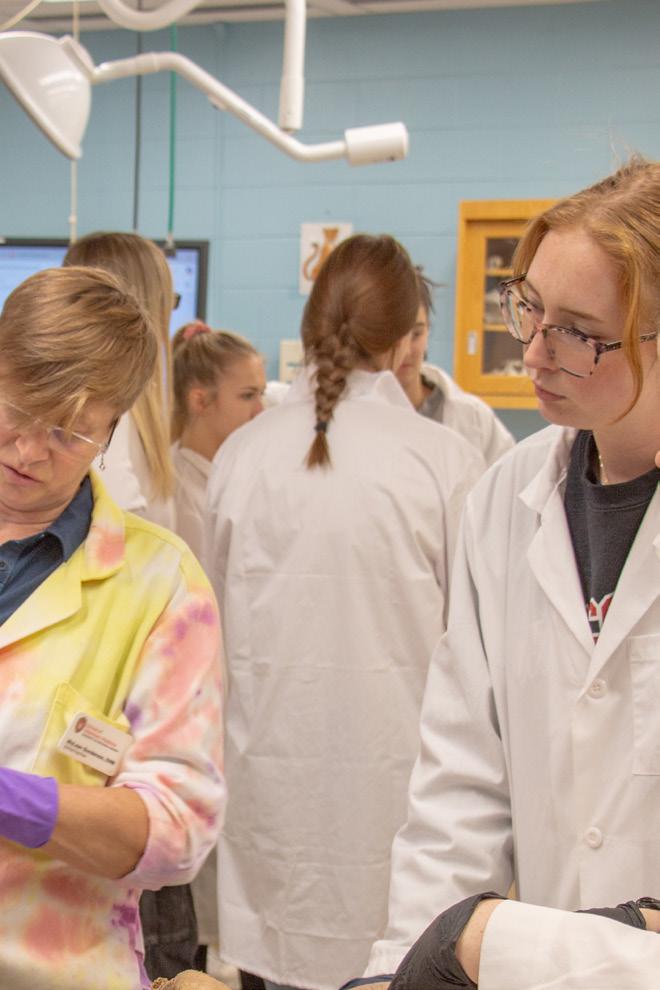
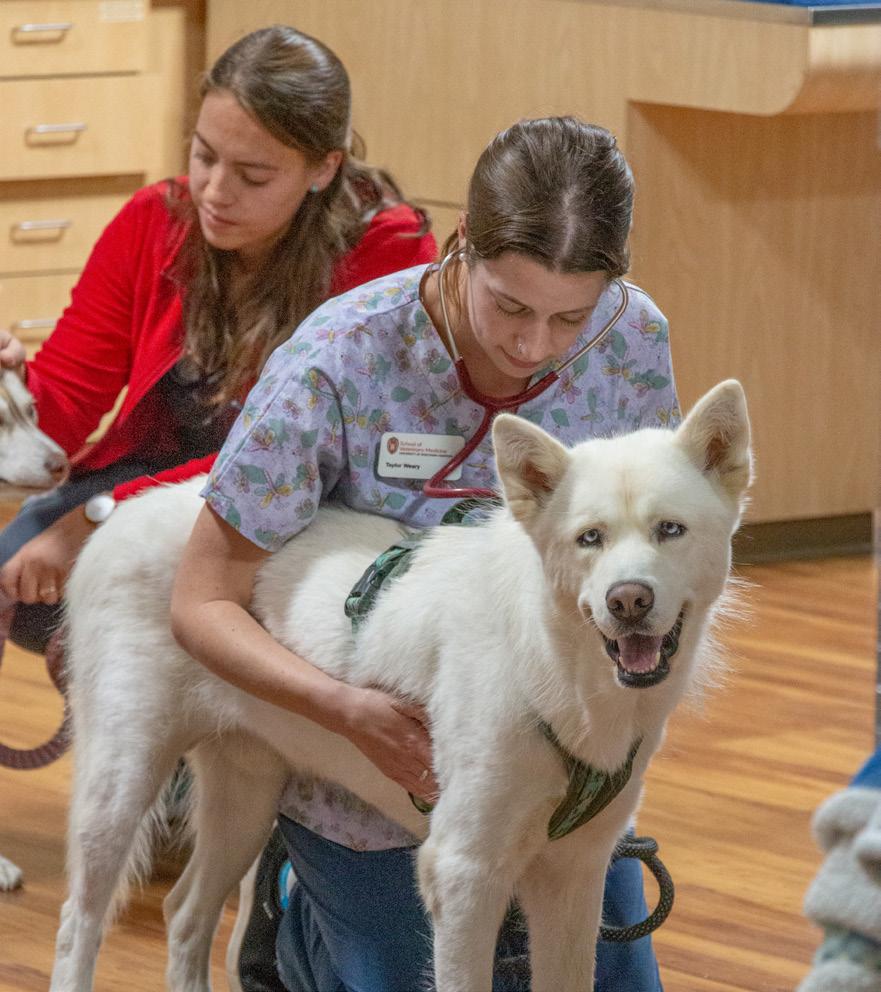
In phase one, subjects such as anatomy and physiology are presented in tandem. This early phase emphasizes interactive, application-based learning — reducing reliance on traditional, classroom-based lecture formats.
The SVM’s recent building expansion supports this shift, with updated instructional space, state-of-the-art technology, and advanced clinical equipment enriching the learning environment.
Phase two focuses on animal disease and dysfunction, building on first-year knowledge to prepare students for the complexities of disease across species. In phase three, students will shift focus to multisystemic, complex and co-morbid diseases, applying cumulative knowledge to real-world case scenarios. Finally, phase four will consist of full-time clinical rotations and features an expanded eight weeks for additional primary care medicine and surgery experiences.
Developing professional skills is another central pillar of OnWard. Topics such as communication, teamwork, leadership, ethics, wellbeing, and financial literacy will be taught through a combination of online modules and in-person activities.
Across all four phases, students will take increasing responsibility for their learning through reduced lecture time, greater emphasis on problem-solving, and expanded use of independent study and case-based scenarios.
“OnWard aims to train veterinarians who are clinically prepared, adaptable, and equipped with essential professional skills immediately upon graduation,” Levine says. “By aligning educational structure with the realities of veterinary practice and emphasizing applied learning from the start, the program prepares students for success in our complex and evolving field.”
Left: Christoph Mans (Department of Surgical Sciences) leads a small mammal handling lab for DVM students.
Middle: McLean Gunderson (‘97; Department of Comparative Biosciences) speaks with students during a large animal anatomy lab session.
Right: Taylor Weary (DVM’25) performs an exam on a Husky at the WisCARES clinic in Madison.
To support instructors as they prepare to teach within the OnWard curriculum, SVM’s curriculum and educational support team will offer a range of materials and services. They will help acquire resources, maintain online courses, and provide real-time support during learning activities. Additional educational specialists will assist in the development of instructional materials and assessments, coaching for new and seasoned educators wanting to advance their teaching skills, and guidance in educational best practices.
Many faculty had already started transitioning to flipped or blended models over the past few years in anticipation of the changes ahead. In fact, the SVM’s early adoption of flipped classrooms during the 2020 shift to online learning provided valuable insight into what strategies work. These experiences laid the groundwork for more widespread use of active and hybrid teaching methods across the curriculum.
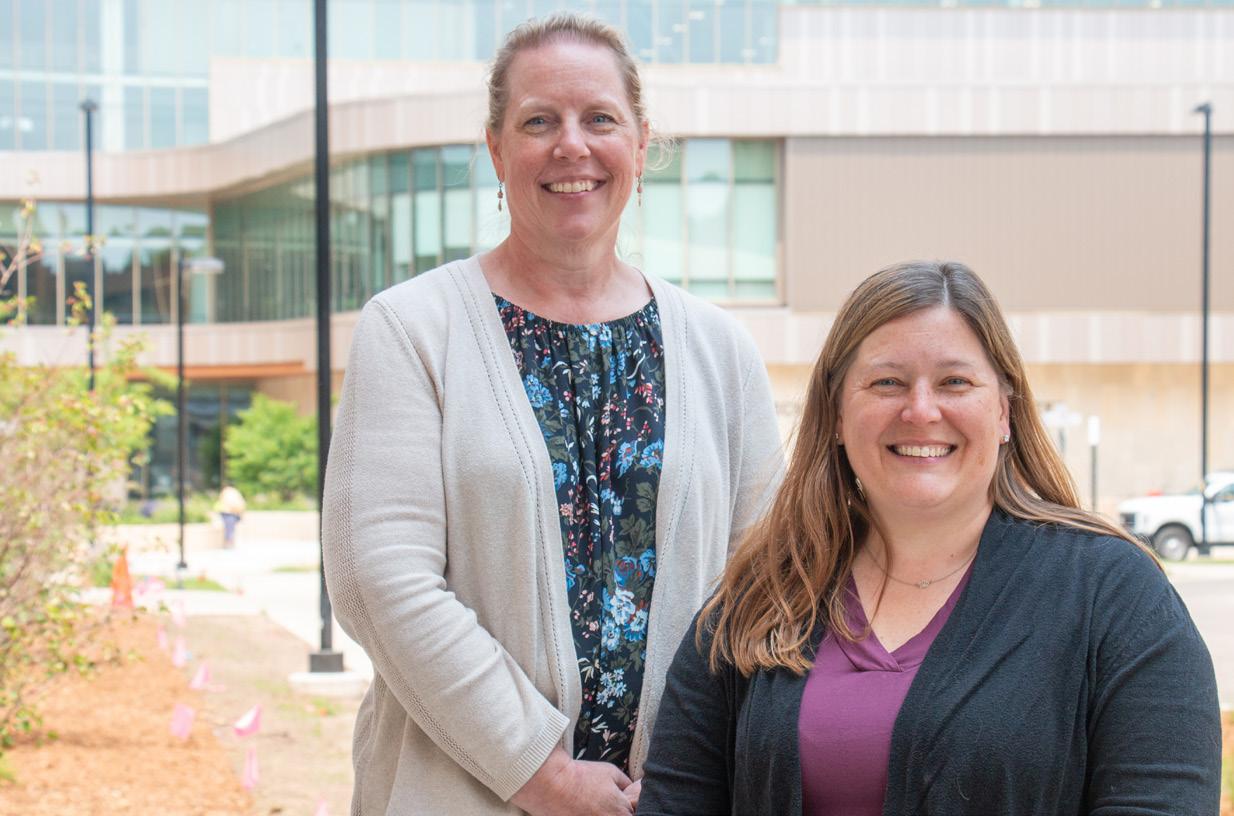
by Jack Kelly
Over the last few years, artificial intelligence (AI) tools have become ubiquitous as users explore how they can use the technology to do everything from mimic the style of Shakespeare to solve complicated homework problems to book travel arrangements.
While some uses of AI are for fun or function, graduate students at the School of Veterinary Medicine (SVM) are leveraging the power of AI to advance both animal and human health. These graduate students also helped teach fellow DVM students to leverage the technology in their work and develop AI applications during the annual Artificial Intelligence for Veterinary Medicine and Life Sciences course in June. Their efforts come as the SVM hires two additional AI-focused faculty members as part of UW-Madison’s RISE initiative.
Marlee Henige (DVM’23), a PhD student in the Comparative Biomedical Sciences Graduate Program whose work is funded by a National Institutes of Health T32 training grant, fell in love with research during her fourth year as a veterinary medical student while enrolled in a pair of AI-focused classes taught by Doerte Doepfer (Department of Medical Sciences). Henige, a native of Middleton, Wisconsin, aims to use the technology to allow veterinarians to make better-informed decisions in less time, conducting research to build a real-time tool to help address antimicrobial resistance, among other things.
Antimicrobials (antibiotics, antivirals, etc.) are “the cornerstone of modern medicine” and used to “treat infectious diseases in humans, animals and plants,” according to the World Health Organization (WHO). Over time, bacteria and viruses can mutate and become resistant to certain drugs, making the resulting infectious diseases more difficult to treat. A recent rise in antimicrobial resistance is one of the world’s top public health threats, the WHO says.
Henige’s research is focused on Digital dermatitis — also known as “hairy heel warts” — a contagious skin infection that is associated with lameness in beef and dairy cattle all over the world. The infections can cause painful lesions on the heels of animals’ feet.
Typically, clinicians prevent Digital dermatitis using disinfectants and treat individual cows’ lesions using, among other treatment agents, topical antibiotics. But they’re making an
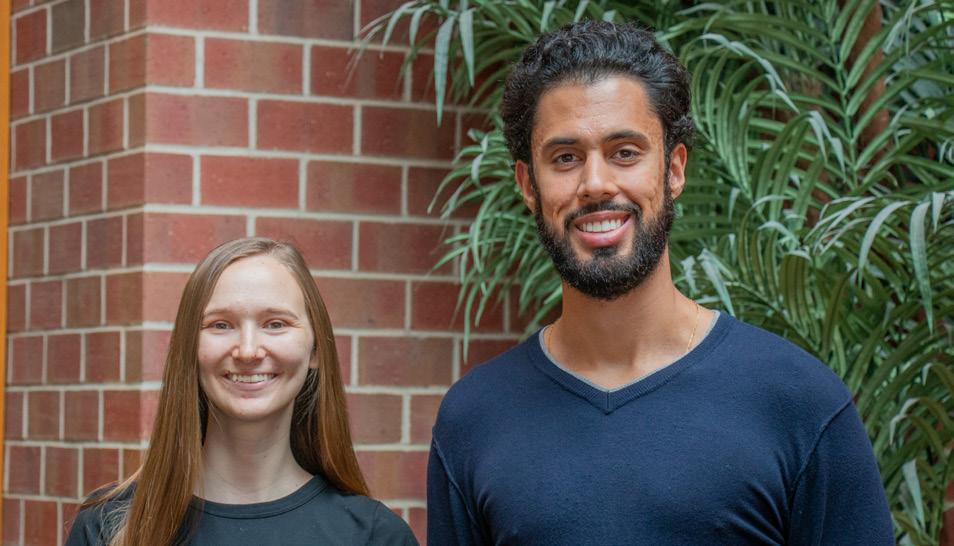
educated guess when deciding what drug to prescribe, Henige says. Ideally, clinicians will swab the infected skin and culture it to determine which type of bacteria is present. However, that takes time, and they often have to make a treatment decision before they have those results.
“I really want to improve decision making processes in real time,” Henige says. “Can you have any information to help you make a better-informed decision at the moment the animal is seen?”
The veterinarian-turned-researcher thinks you can.
Doepfer’s lab has a collection of samples of Digital dermatitis-infected bovine skin that have been sequenced and turned into images to show their DNA. Traditional data analysis would compare the sequences to data banks of known sequences. The goal of Henige’s work is to shorten this process by using a computer vision model — an AI model that uses images to detect objects — that can analyze visualized DNA to show which antimicrobial resistant genes are present.
But it’s a little more complicated than just snapping a photo of a cow’s foot and inputting it into the model. Instead, veterinarians need to take a biopsy of the infected skin and then insert it into a hand-held, cellphone-sized DNA sequencer. Once the DNA of the microbes inhabiting the skin has been sequenced, you can feed the resulting sequences into the model and get a response. The model can help identify factors associated with the microbial resistance to certain drugs. The whole process should take less than 30 minutes, Henige says.
Fernando Valle (MSx’26) is using his time at the SVM to make a career pivot. Born in São Paulo, Brazil, Valle holds an undergraduate degree in computer science and previously worked with software companies building and designing web solutions.
“I was looking for something that challenged me,” he says, which led him to take summer courses at the Massachusetts Institute of Technology. He met Doepfer while on campus in Cambridge; she invited him to Madison to explore the academic world and develop AI-related projects.
After a year-long research internship working on AI models to help cows stay cool in warm weather without wasting water,
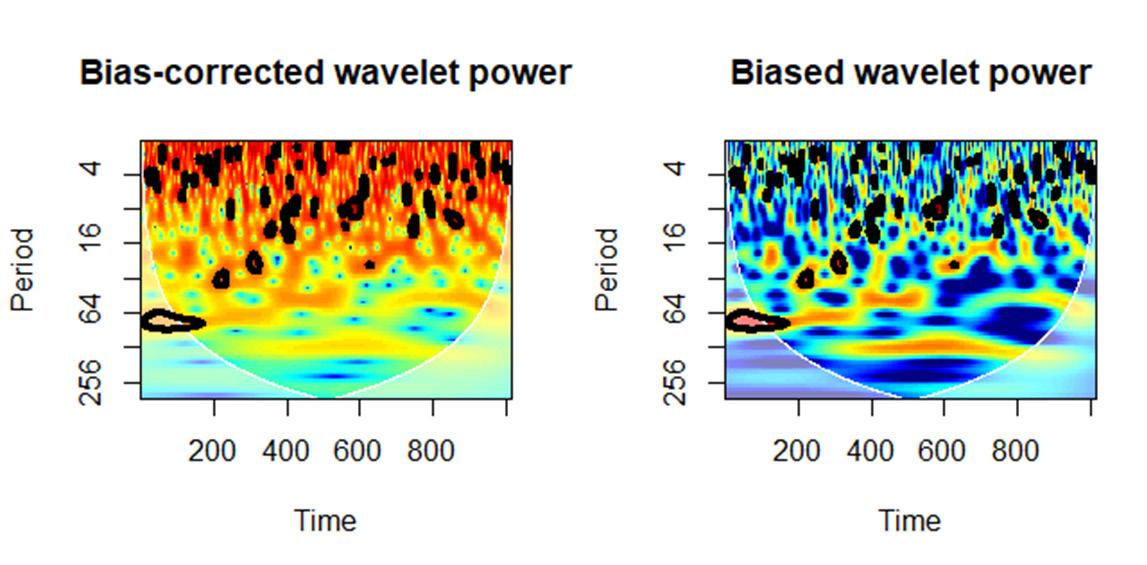
Valle enrolled as a master’s student with the Comparative Biomedical Sciences Graduate Program in January 2025. His work in the Doepfer lab is funded by industry. Today, he’s working on a tool to help dairy farmers and cattle ranchers identify animals with mobility issues, known as lameness, using AI-enhanced camera detection.
Using top view images of beef cattle walking, Valle is training an AI model to predict lameness based on hundreds of variables — including how fast an animal is walking, which direction it’s walking, and how certain body parts and its head move. To generate the variables, he assigns key landmarks to the bodies of the animals in images. The landmarks can then be tracked to help determine if an animal is experiencing lameness.
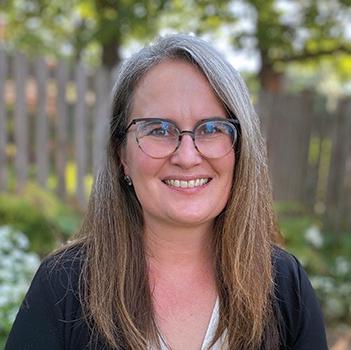
Far left: Marlee Henige is using AI to help veterinarians make better-informed decisions in less time. Fernando Valle is working on a tool to help dairy farmers and cattle ranchers identify animals with mobility issues using AI-enhanced camera detection. Left: This image is the conversion of a random DNA sequence into an image using wavelet transformation techniques. (Courtesy of Marlee Henige)
In total, the model evaluates more than 800 “features” (datapoints generated by the landmarks moving across a camera’s field of vision) to try to predict lameness. The tool Valle is building could be especially important for cattle feed yards and harvesting plants, he says. Early detection of lameness is important for animal welfare and for economic reasons. It also potentially enables farmers to address potential injury sources, initiate treatment, and prevent lameness in the future.
The potential health benefits for animals keeps Valle energized, he says.
“I come from business and software companies, where it is always about how to make more money,” Valle says. “Here, I get to do work that helps keep animals healthy and farmers happy.”
Summer has arrived, and with it, concerted time for research for MS and PhD students — and their advisors — in the Comparative Biomedical Sciences Graduate Program. The laboratories here in the Hanson Biomedical Sciences Building are humming with activity, and Babcock Hall does a steady business of ice cream sales when we have incubation periods during experiments.
Let me start with celebrations. This spring at the investiture ceremony for the School of Veterinary Medicine, we celebrated recent PhD graduates, who have pursued independent research of the highest quality, and have advanced their fields. That included Marcos IsidoroAyza, who studied pathogenesis of white-nose syndrome in bats; Portia Smith, who advanced stem cell-derived macrophages for the treatment of solid tumors; and Emily Dunay, who studied viral and bacterial pathogens in sanctuary chimpanzees across Africa.
Shortly thereafter, Bubacarr Touray successfully defended his dissertation work on nanovaccines to combat respiratory pathogens, and Jiwon Seo successfully defended her MS thesis on immune contributions to cardiac function and fibrosis after myocardial infarction. I love having the opportunity to describe the work that CBMS students are
doing. Each of these scholars is to be commended for the hard work, and heart work, they put into research that manifests our mission of advancing animal and human health with science and compassion.
Recently, we welcomed an effort from CBMS students to strengthen the sense of community within our graduate program by establishing a student led Welcome/Social Committee — a group dedicated to ensuring students feel supported and engaged from the moment they arrive.
Our research community continues to adjust to the changing landscape for research funding, and the CBMS graduate program is ever-adapting to provide support to students from recruitment to graduation. As it relates to recruitment, because of funding uncertainty, there are fewer labs bringing in new students this year. Even so, a great group of new CBMS students will start this fall, and we look forward to introducing them in a future edition of the magazine.
Lyric Bartholomay (PhD’04) Professor, Department of Pathobiological Sciences Director, Comparative Biomedical Sciences Graduate Program
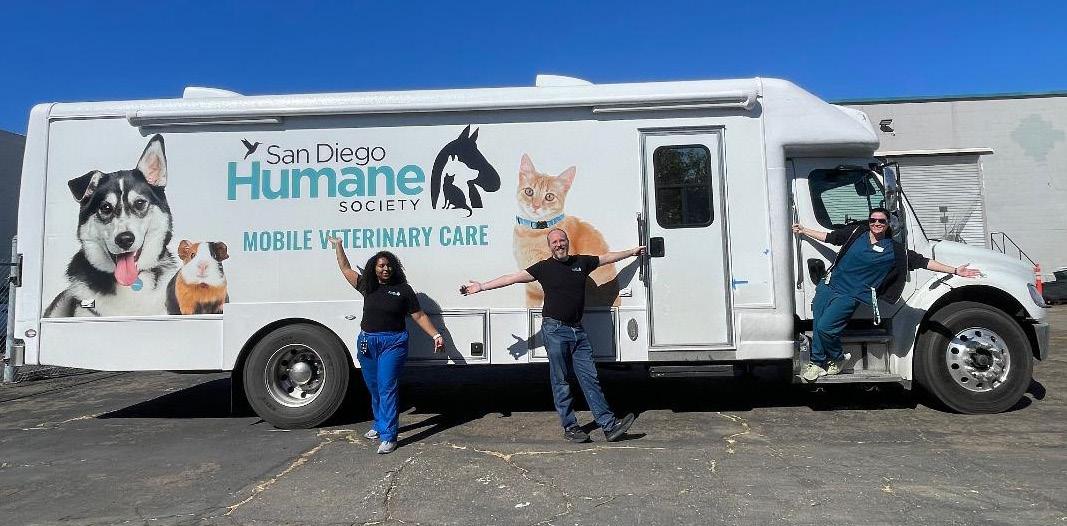
These days, Adam Bauknecht (DVM’09) is spending his time cruising around southern California.
He sometimes makes those drives in the types of cars you expect to see on the road. More recently, he’s been in a 34foot truck outfitted with a fully functioning operating room set up to perform spay or neuter surgeries on cats and dogs.
Bauknecht works as a shelter outreach veterinarian with the San Diego Humane Society. His current job is the culmination of a 30-year career that, despite having some twists and turns, has always had one throughline: animal shelters.
“There are an awful lot of homeless animals, and I want to do whatever I can to help them as much as possible,” Bauknecht, who believes the SVM’s shelter medicine program was formative in his career, tells On Call.
The Manitowoc, Wisconsin, native started working with animals in need in 1996. After earning an undergraduate degree in animal biology from the University of WisconsinGreen Bay, Bauknecht accepted a job at the nearby Bay Area Humane Society. Next up, a move to Madison led to five years working at the Dane County Humane Society.
His job responsibilities prevented him from going back to school for a while, Bauknecht says, as he learned more about
by Jack Kelly
shelters and homeless animals. But after nearly a decade of working in the space, he felt like he was at a crossroads.
“At that point, I had hit a ceiling on what I could accomplish in the sheltering world,” Bauknecht says. He knew he needed to go back to school, either to become a veterinarian or to learn about nonprofit management.
When he factored in “the kind of impact that I wanted to have for homeless animals,” it was a no brainer, Bauknecht says, and he headed to vet school.
He started as a student at the School of Veterinary Medicine (SVM) in August 2005 — almost 10 years to the day after he completed his undergraduate degree. During his four years in the DVM program, he continued to work with shelters, volunteering with Dane County Friends of Ferals (now Madison Cat Project). After graduation, Bauknecht had short stints as a surgeon at a high-volume spay-neuter clinic and working in private practice.
But a trip to a veterinary conference reminded him of his love for shelter medicine and why he got into the profession in the first place. When a job opened at the Madison Cat Project, he jumped at the opportunity.
For the next 13 years, Bauknecht performed thousands of spay
and neuter surgeries on cats, hoping to help curb the homeless animal population. He also got to give back, working with SVM students and teaching them about the procedures.
Flash forward to February 2024, and Bauknecht decided it was time to mix things up again. He wanted to help even more animals in need than the 750-900 that he was seeing each year, so he and his cat, Meowster, made the cross-country move to San Diego.
His current role with the San Diego Humane Society lets him do just that. Working on a three-person team, Bauknecht travels around the San Diego area and southern California to meet with other shelters. They serve as veterinary consultants, making recommendations on how shelters can improve their efficiency and safety protocols when it comes to spay-neuter operations.
Bauknecht and his team are also looking to expand the services into more operational consulting, providing guidance on things like pathway planning, disease and outbreak management, adoption policies, and foster programs.
The 34-foot mobile spay-neuter unit is part of that work.
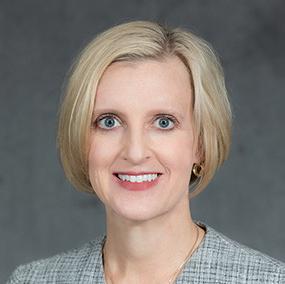
Dear alumni – As you read in this issue, we are ready to launch “OnWard,” our new DVM curriculum (see page 16). Five years in the making, the curricular revision marks the start of an exciting new chapter in the school’s history. During our trips around the state and in other meetings with alumni, Dean Levine and I heard a lot of excitement about OnWard and how it will prepare our DVM students.
Our legacy curriculum was solid and strong – as demonstrated by your success and that of your fellow alumni. But the requirements of the veterinary medical profession have evolved, as has what we know about best practices in teaching and learning. The new curriculum meets these changes and we appreciate the part alumni played in its development. Whether it be through completing surveys, sharing direct feedback, or participating in working groups, OnWard reflects your input and is better as a result.
Alumni have helped build our reputation for leadership and excellence over the years – #5 according to recent US News & World Report rankings and #12 in the world according to QS – but
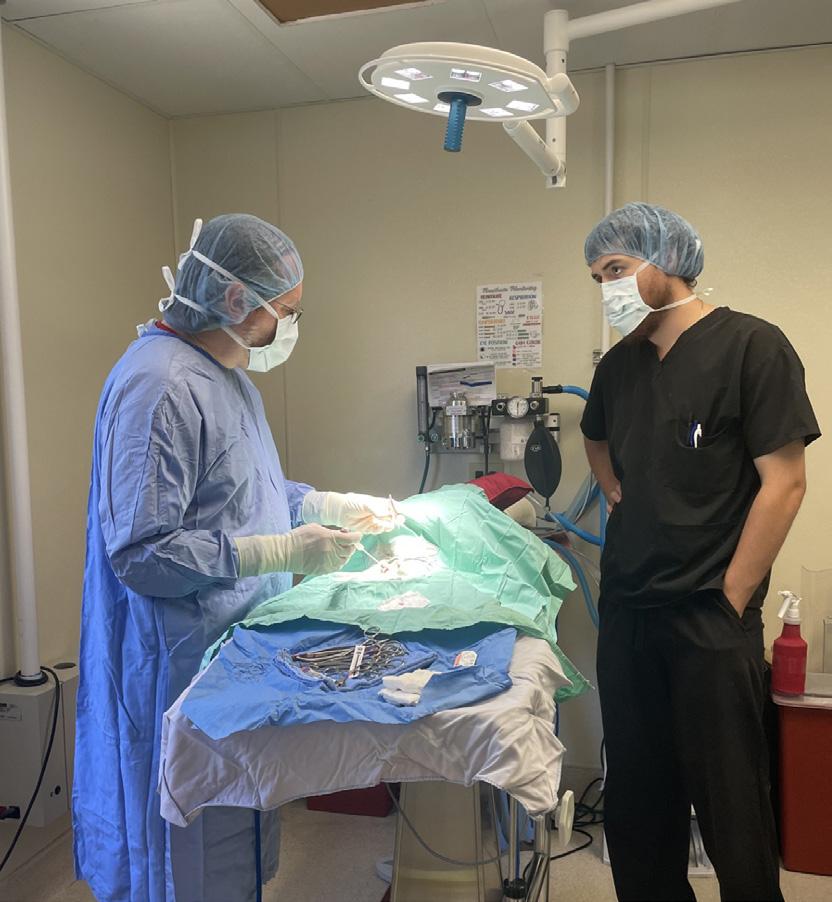
Housing two tables, the operating room on wheels accommodates 20-30 procedures per day. It recently made its inaugural trip to a two-day event in California’s Coachella Valley.
When Bauknecht isn’t on the road, he works closely with the San Diego Humane Society’s surgery department, where he mentors students from Western University, Arizona State, and UC-Davis on their spay-neuter skills.
Spending his time working with students reminds him of his own time in vet school, Bauknecht says. He has fond memories of the “top notch” surgery opportunities afforded to SVM students.
More than 20,000 surgeries later, Bauknecht remains committed as ever to his mission of reducing the number of animals in shelters around the country.
“I’m always excited to do more,” he says. “That tells me that I’m where I want to be, doing what I want to be doing.”
you’re more than an important part of our past: you also play a key role in our future. Whether that is helping shape the new curriculum, contributing to the school’s next strategic plan, participating in our Alumni Student Mentoring Program (which is expanding to include 4th year students this year), signing up as a speaker for student events, or joining the SVM Alumni Association, your engagement and support help solidify the school’s reputation for excellence, innovation, and leadership.
Thank you.
Kristi V. Thorson Chief of Staff Associate Dean for Advancement and Administration
Join or Renew your 2025-26 SVMAA membership today
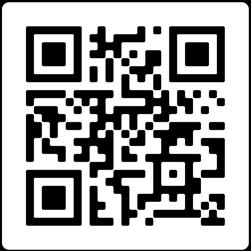
Visit our strategic planning website
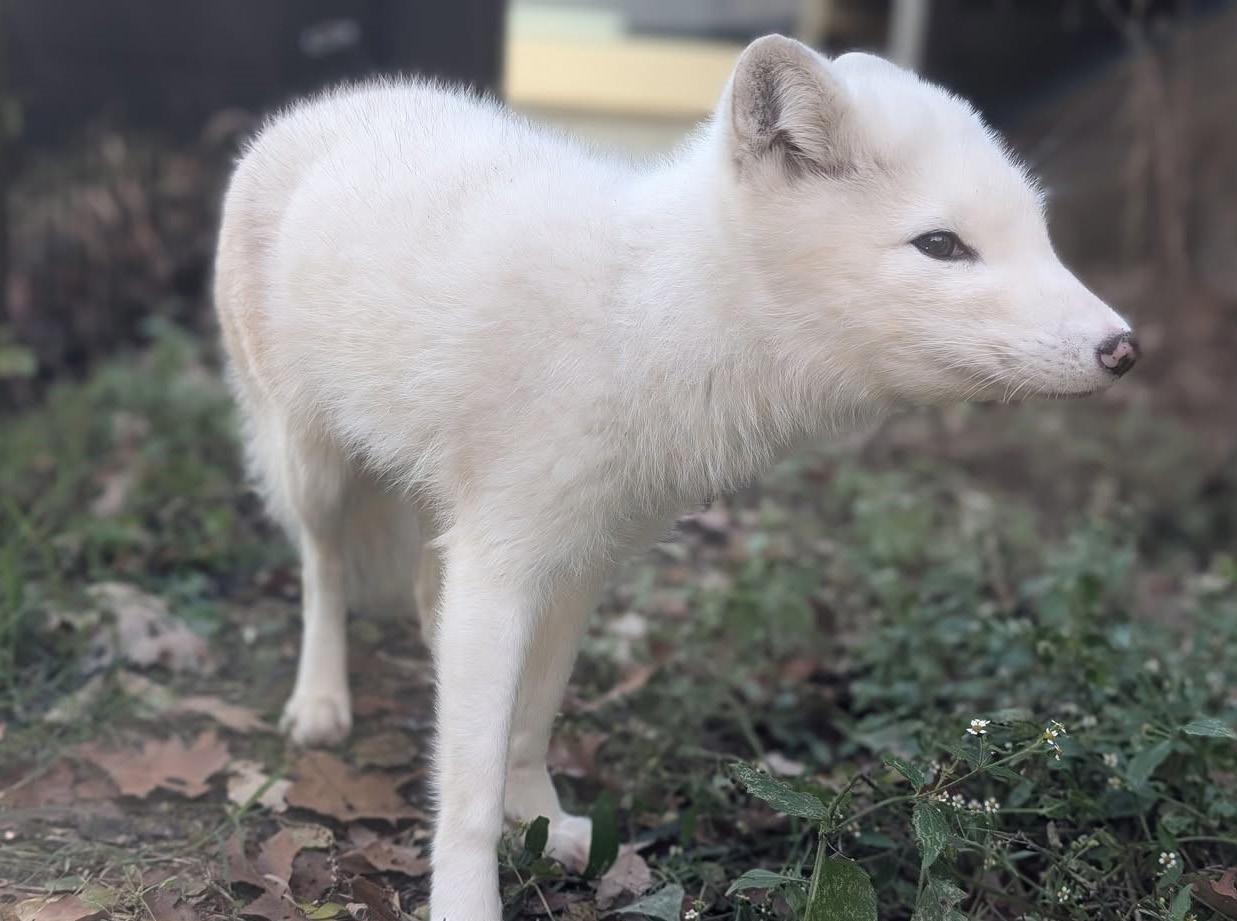
by Simran Khanuja
When Luna, an Arctic fox from Oregon, arrived at Ochsner Park Zoo in Baraboo, Wisconsin, her caretakers knew she was special. She had made national headlines for her unique rescue and long journey. But soon after arrival, her keepers noticed something was wrong.
At first, staff thought she was adjusting, but her appetite and energy continued to decrease. Concerned, the zoo’s team contacted UW Veterinary Care (UWVC).
Luna was admitted to UWVC in poor condition — dehydrated, emaciated, and weak. Her fur was stained from diarrhea, her eyes sunken, and several lymph nodes swollen.
“A healthy fox is usually difficult to handle without sedation, but Luna was so sick she required minimal restraint,” says Alyssa Scagnelli (Department of Surgical Sciences), clinical instructor of zoological medicine.
Blood tests revealed bacteria inside Luna’s white blood cells, suggesting a rickettsial infection, a bacterial disease transmitted by vectors like ticks or mites. Her liver enzymes were dangerously high, and similar bacteria were found in her lymph nodes. Since Luna came from the Pacific Northwest, veterinarians suspected salmon poisoning disease, a rare illness caused by neorickettsia helminthoeca transmitted by a parasite found in that region. PCR testing confirmed the diagnosis.
Luna, an Artic Fox, was treated by UW Veterinary Care clinicians for a rare illness known as salmon poisoning disease.
(Courtesy of the Ochsner Park Zoo)
Luna began treatment with antibiotics, IV fluids, gastric protectants, antiparasitic and liver medications, pain relief, and anti-nausea drugs. Within just a few days, she started improving.
As Luna’s energy returned, she was discharged back to the zoo to continue her recovery in a quieter, more familiar environment. Follow-up tests confirmed normal bloodwork and fecal results, and she steadily gained weight while starting to display more typical fox behaviors.
“The key lesson from Luna’s case is the importance of an animal’s history when considering diagnoses,” Scagnelli says. “Without knowing she came from Oregon, we would never have suspected salmon poisoning disease. This is a once-ina-lifetime diagnosis that you would never expect to see in an animal from Wisconsin. Travel histories are important for pets and zoo species alike.”
Today, Luna shares her enclosure with Apollo, a male Arctic fox, and Taglu, a male black bear. Though initially hesitant, she now frequently plays and wrestles with Apollo and has grown less fearful of Taglu.
“Luna is doing fantastic,” says Ochsner Park Zoo Manager Katie Gries. “Visitors love her, and donors from across the country have come specifically to see her.”
When the zoo shared Luna’s story and asked for support, more than 150 donations came in from over 20 states to help fund her care and other needs.
“What stands out most is the community Luna created,” Gries says. “Thanks to the love and support we received for her, we were able to give her everything she needed. It is amazing how this small little creature brought us all together.”
Referring veterinarians and community members have trusted UW Veterinary Care with pet health and complex veterinary cases for more than 40 years.
• 20+ specialty services
• Emergency & critical care
• State-of-the-art facilities & diagnostics
• Small animal, large animal & special species
• Research & clinical trials to advance animal & human health
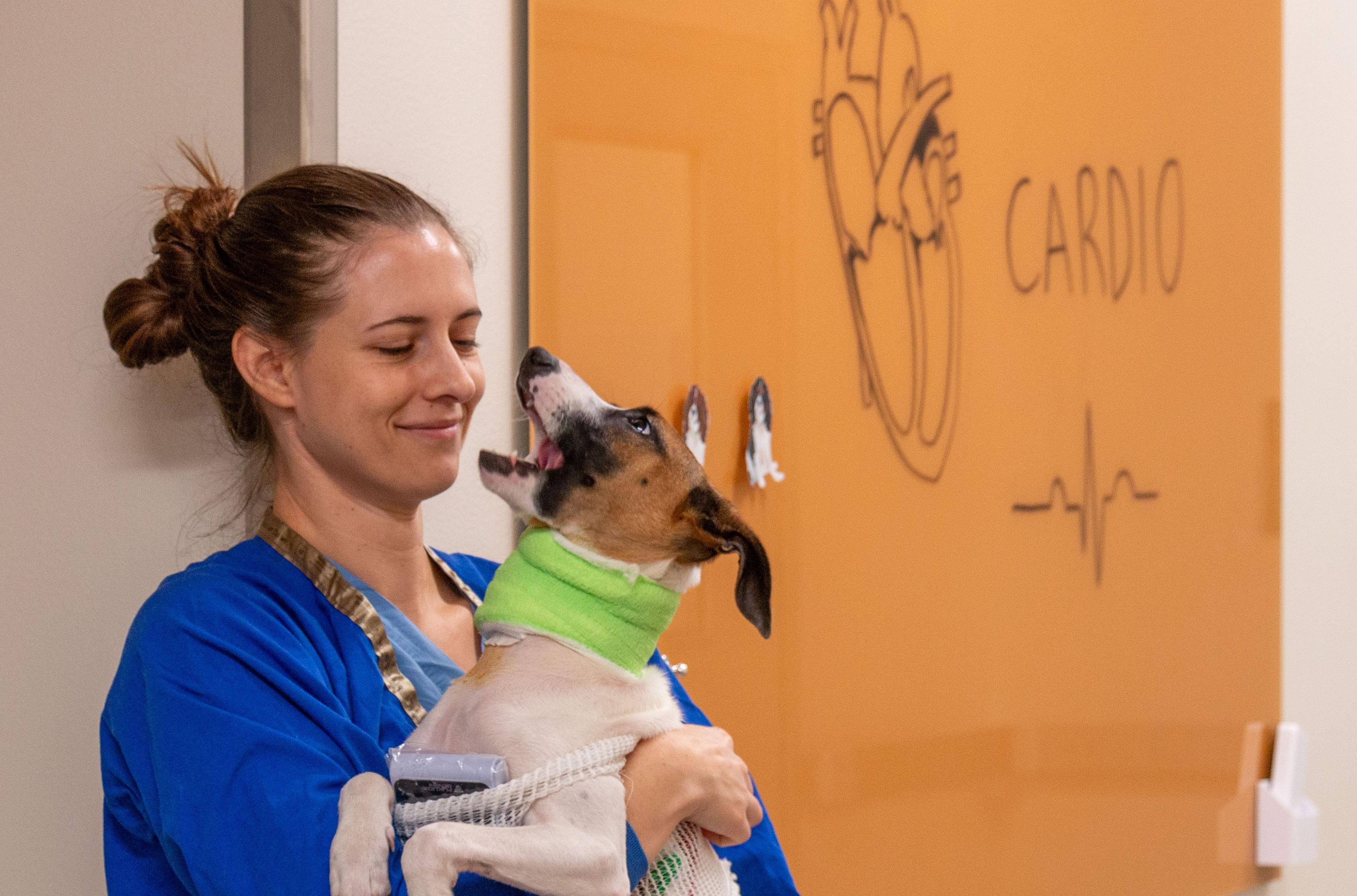
career opportunities at UWVC: Grow and learn with a worldclass team in a dynamic and flexible environment
2015 Linden Drive
Madison, WI 53706-1102
We help UW Veterinary Care clients learn essential at-home care skills recommended by their veterinary team.
Training Topics Include:
Basic Care
Nail trims, tooth brushing, ear cleaning
Medications
Pills, liquids, injections, blood sugar checks
Medical Support
Tube feeding, bladder expression, bandage changes
Handling & Safety
Proper harnessing and restraint
Visit go.wisc.edu/uwvc-cllc or scan the QR code to learn more and register!
